Brazil, Part 10: Rio de Janeiro, The Marvelous City
— Brazil — 10 min read
October 24 - November 3, 2010
After a nice few days in the fishing village of Picinguaba, I headed up to the gem of Brazil, the Cidade Maravilhosa (marvelous city) of Rio de Janeiro. Besides getting to know this icon of South America, I also had some paperwork to take care of, namely visas for Argentina and Chile.
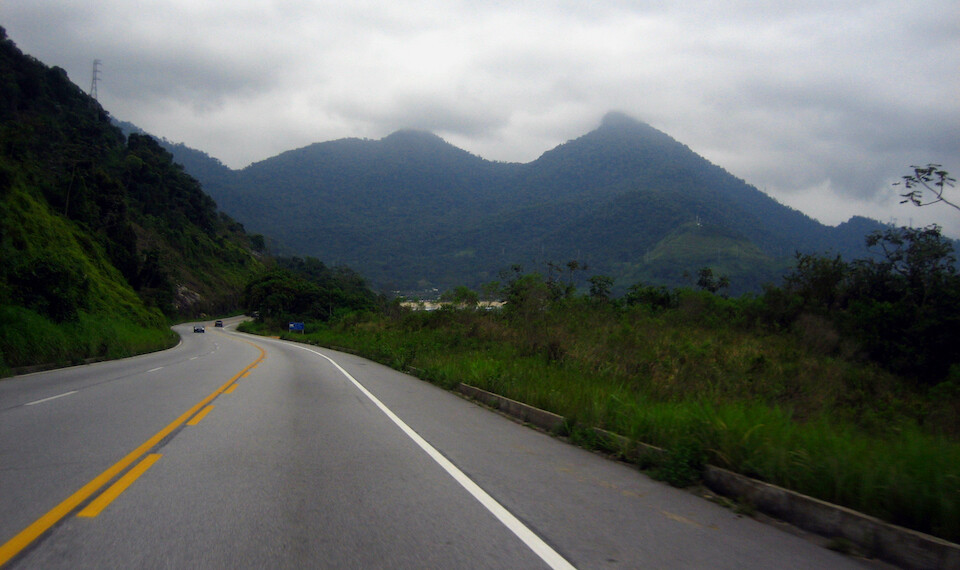
Heading up BR-101 along the lush, mountainous coast route to Rio de Janeiro.
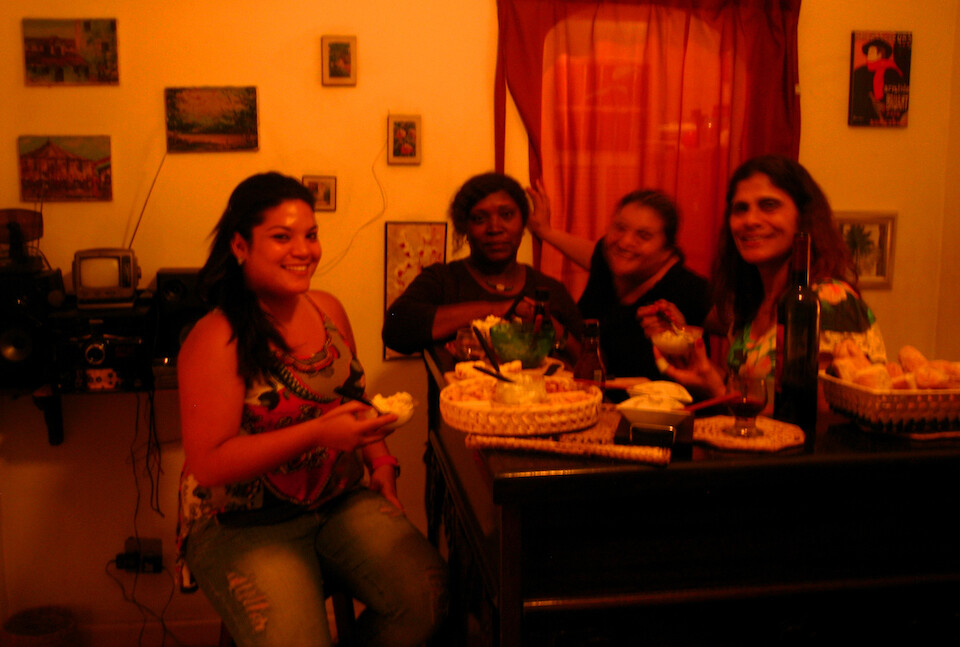
Arriving in time for a little get together at my CouchSurfing host, Sonia's place (she's the one in the doorway to the kitchen). Larissa on the left is from Recife who was also staying with Sonia thru CS. She's a civil engineering student and came to Rio for a conference. The other two friends are Rita and Marsa.

The next morning, after submitting my visa application at the Argentine consulate, I had a tasty snack of an Acai smoothie. It's a fruit of a plam tree and is gaining global recognition as a super-food for its high concentration of anti-oxidants along with good proteins, healthy fats and always needed dietary fiber. It's popular all over Brazil and is typically served with granola. Mmm. Tasty and you get a purple tongue afterwards :p
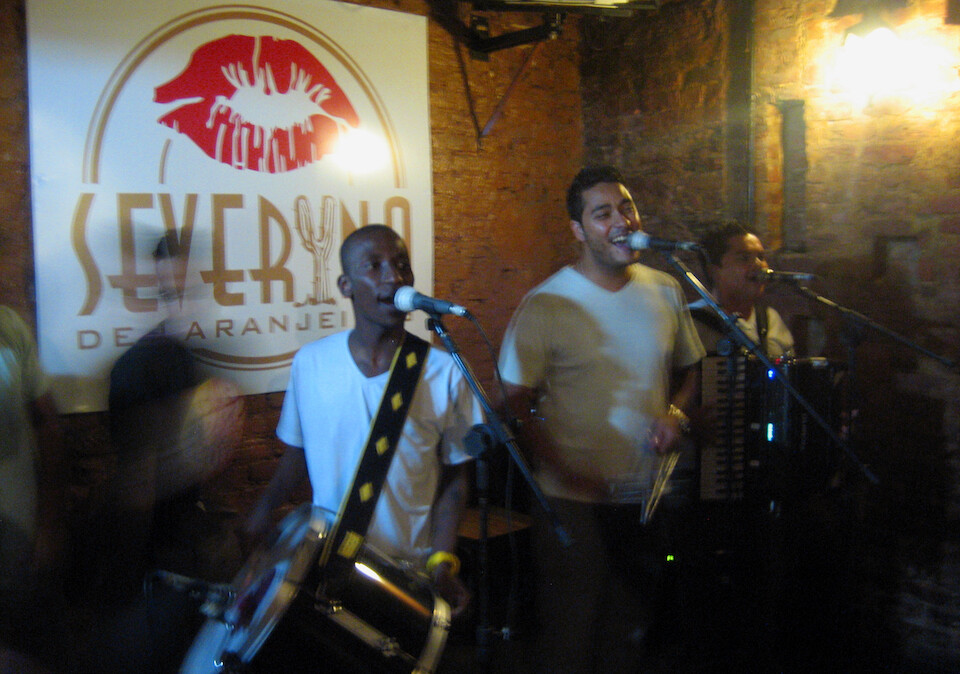
At night, Larissa, being from the northeast, wanted to seek out this particular bar, Severyna de Laranjeiras, which is considered the trendiest place to experience Forró dancing in Rio.
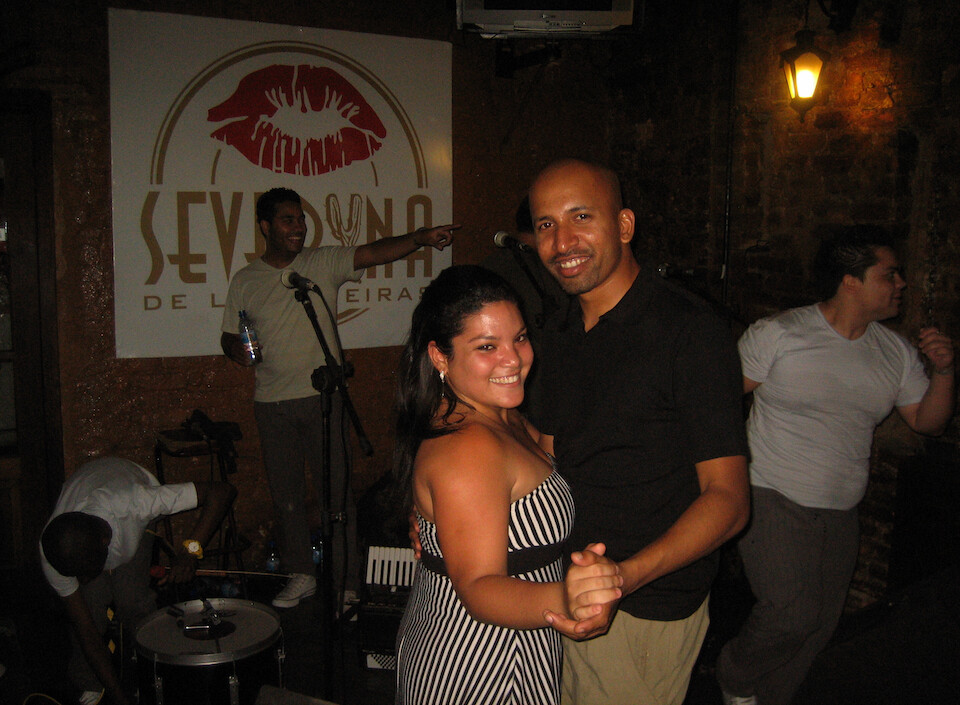
After my introduction to forró in Ubatubu with Talia, I already had the rhythm down, but needed a bit more practice for it to come smoothly. Larissa had patience and said I was improving steadily through the evening. Besides the basic two steps to the left and then two steps to the right, I even attempted a few spins. It was nice to see more experienced dancers and the possibility of the moves in this dance style.
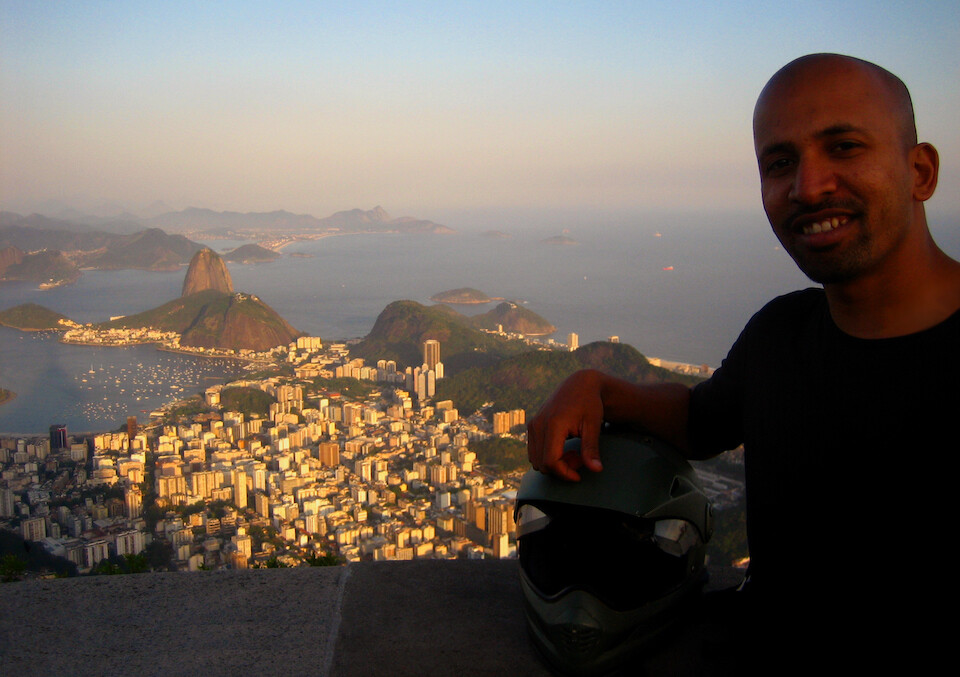
The weather was kind of iffy for a few days, but with the sun out, I headed up to Corcovado, a 710 m (2,329 ft) granite peak located in the Tijuca National Park, for its panoramic views of Rio. At sunset, the colors are beautiful across the city. The dome in the background is Pão de Açúcar (Sugarloaf Mountain).
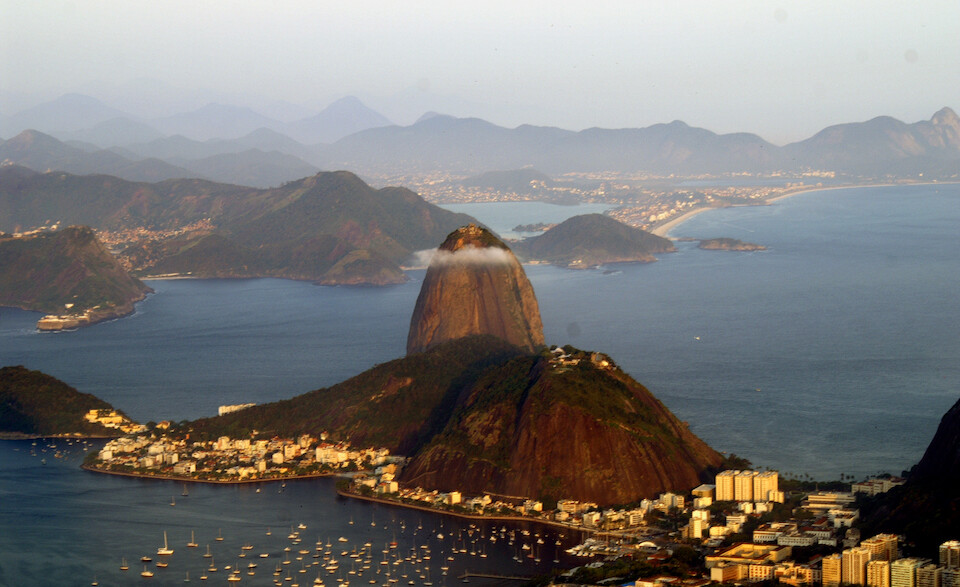
A closer look at Pão de Açúcar with the fading rays of the sun creating a small cloud around the granite peak, highlighting the difference in height from sea-level, 396 m (1,299 ft). This is just one of numerous monolithic morros (rocky outcrops in shallow waters) that line the coast around Rio. The city itself is fantastic for its culture, but the variation in geology within city limits is what's really striking to me.
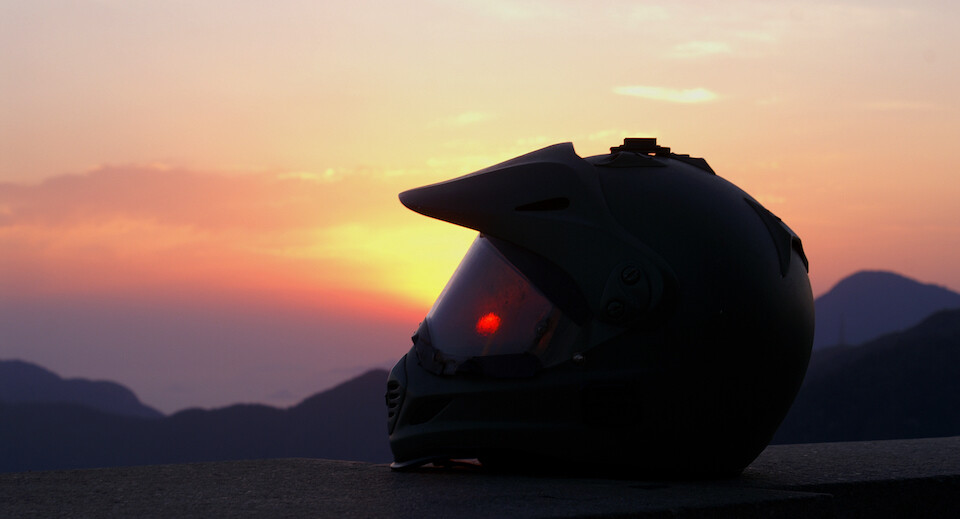
The setting sun piercing through my Arai XD helmet.
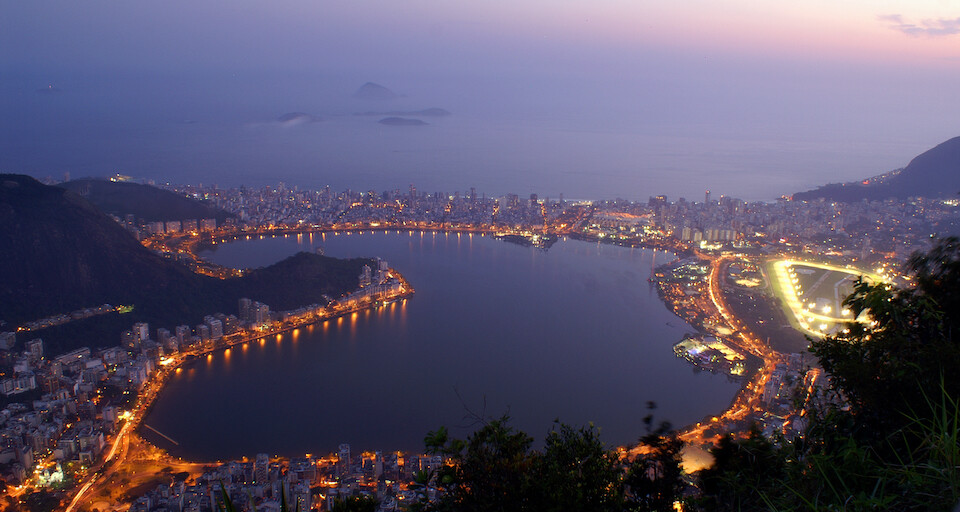
Lagoa Rodrigo de Freitas at sunset from Corcovado, adding to the geologic diversity of Rio. It's a huge salty lagoon that is connected to the Atlantic. The small strip of land separating it from the ocean harbors the neighborhood of Ipanema. Copacabana is to the left and Leblon to the right.
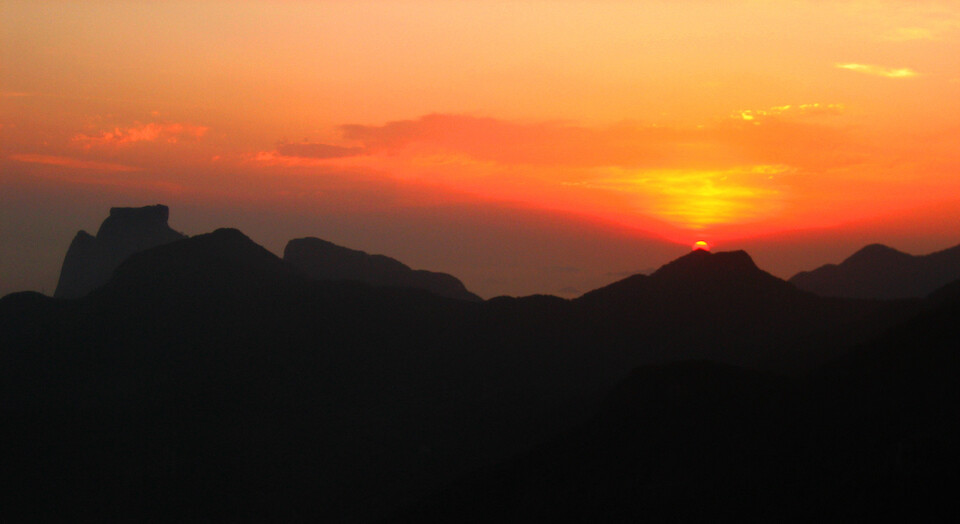
The sun dipping down below the mountains of Tijuca National Park, the largest urban forest in the world. The mountains were stripped bare in the early days of colonialism for sugarcane plantations, but seeing the benefits that forests provide, such as holding fresh water supplies for the city, the Portuguese King Don Pedro II, ordered the mountains to be reforested. And while it's extremely difficult to regrow a rainforest ecosystem, the forest that exists now is good enough to provide a sanctuary from the city and keep nature close by.
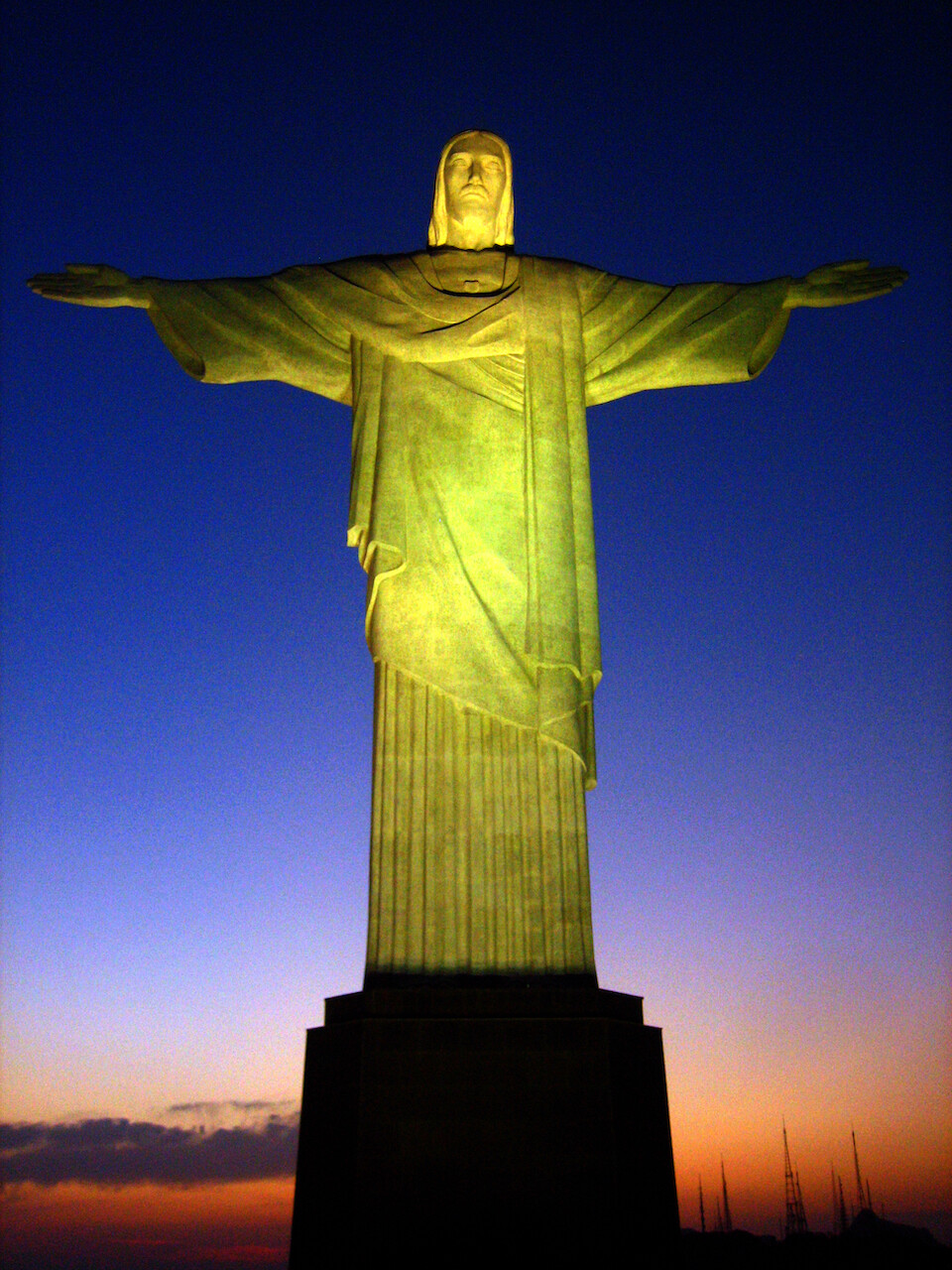
And last, but not least, besides the great views of the city from Corcovado, it's also the site of the Cristo Redentor (Christ the Redeemer) statue. An icon of Rio and Brazil. Towering 40 m (130 ft), it was built in the 1920s by donations from the local Catholics to symbolize peace. However, how peaceful can a statue be if it's got spikes to prevent birds from perching on it?
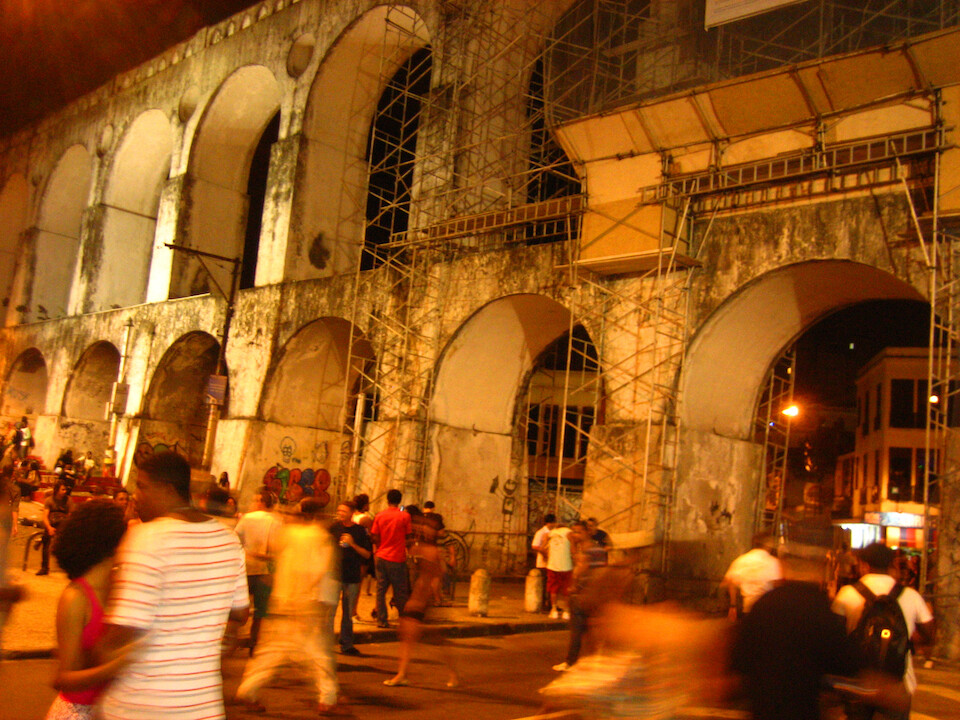
Heading out in the evening, for a night out in Lapa, a lively neighborhood near the center known for its numerous restaurants and bars. The fun happens under the Arcos da Lapa, an aqueduct built during colonial times.
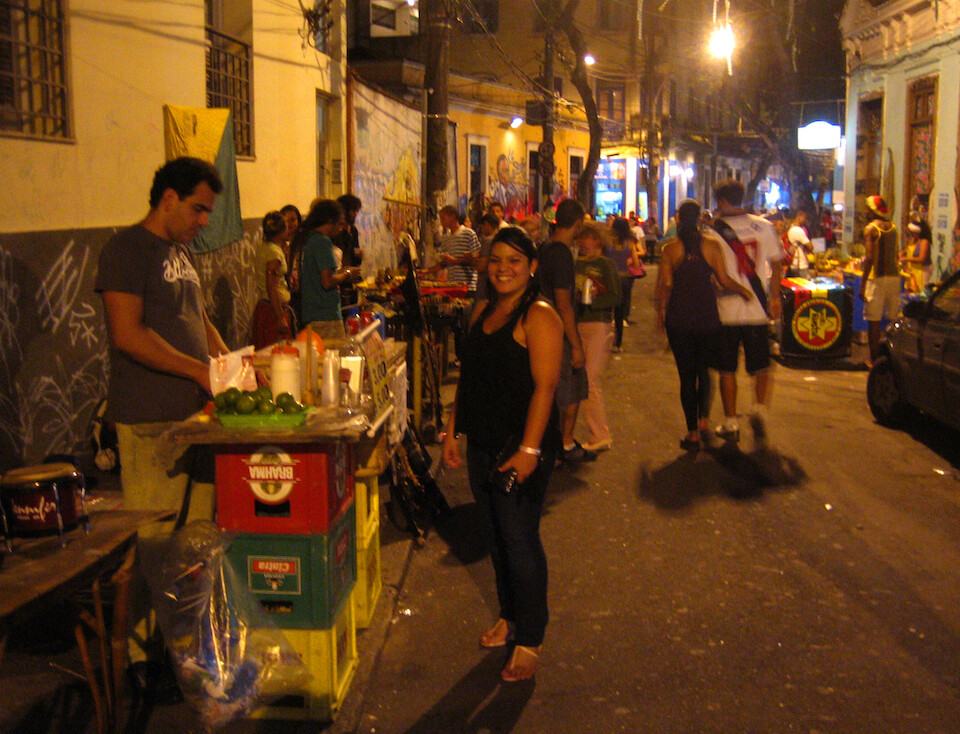
Larissa getting us some fresh Caipirinhas from a street bar. It's the national drink made with cachaça (an alcohol from sugarcane juice), lime and sugar.

The view from a club's balcony of the throngs of party-goers in Lapa. It's true what they say about the good times in Rio. After dancing away inside, it was good to come out for some fresh air and people-watch from up here, seeing the street-hawkers selling essentials to the crowd: chewing gum, cigarettes, drinks and the blue food stands in the back looked quite inviting.

Towards the end of the night, around 5 am, it was time for some after-bar food. In the US, this would be a big, greasy pizza slice, but here, you can get...

A tasty plate of sausage with rice and some veggies. Anything greasy tastes good at the end of the night.
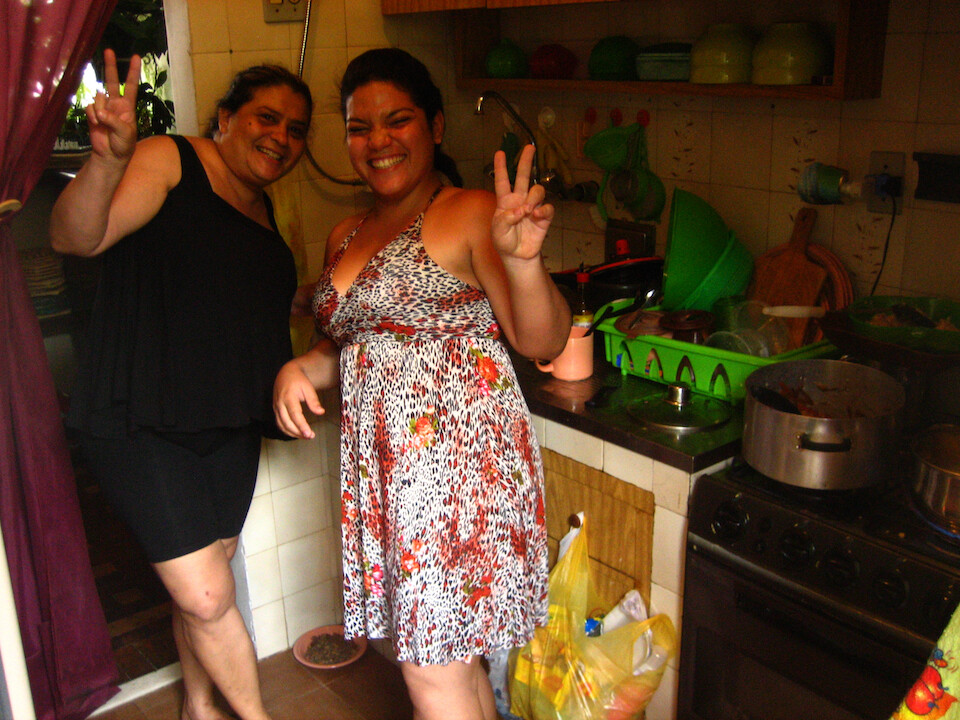
By now, with enough references written on my CouchSurfing profile about my chicken curry, it's the first thing that a host asks me about. So, of course, I prepared my curry for Sonia and Larissa.
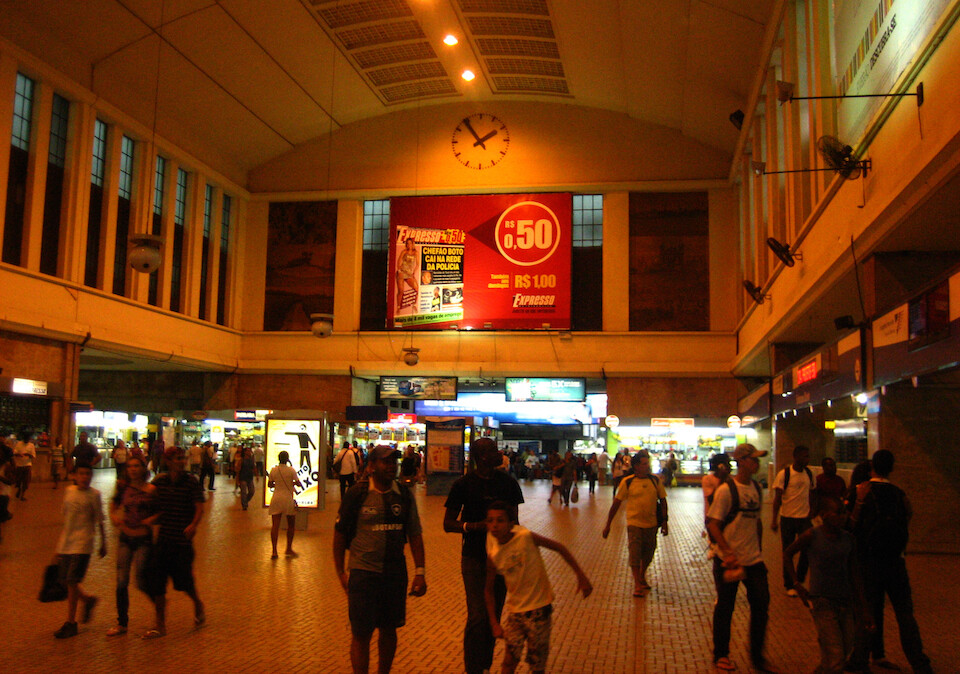
At the central train station. Sonia is an active participant in Rio's Carnival (like most Cariocas - people from Rio) and she invited Larissa and I to come along for a birthday party at the samba school that she's part of.

Taking a metro train to the neighborhood of Gamboa, on the outskirts of the city.
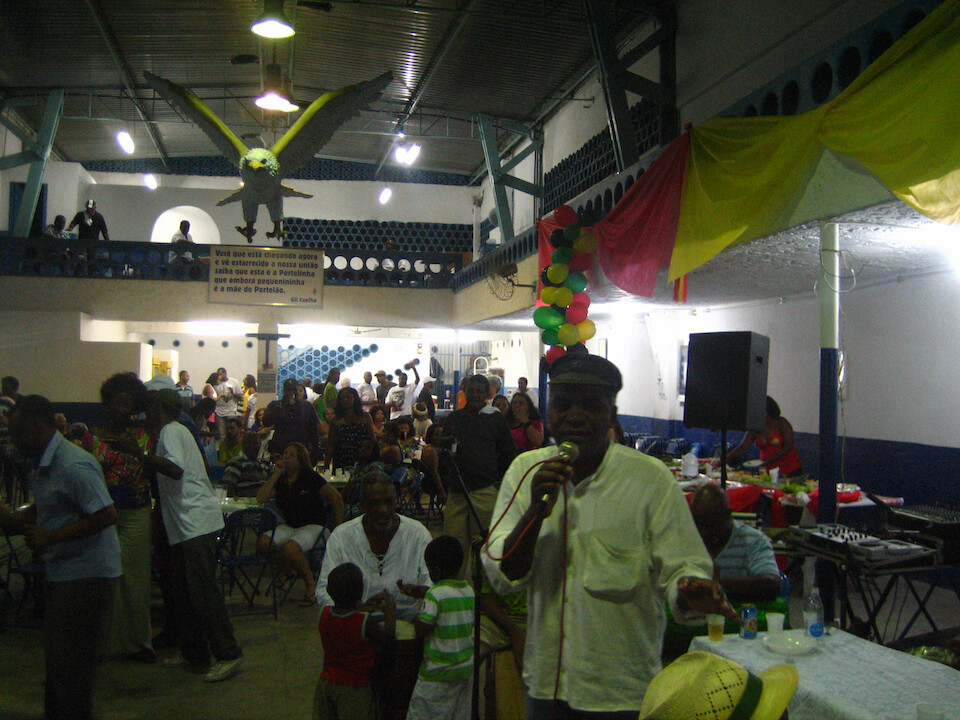
The birthday party underway in the practice hall of the Portela Samba school, full name: Grêmio Recreativo Escola de Samba Portela. The party was in celebration of the man in the white shirt, playing the bongo drums with the two kids.
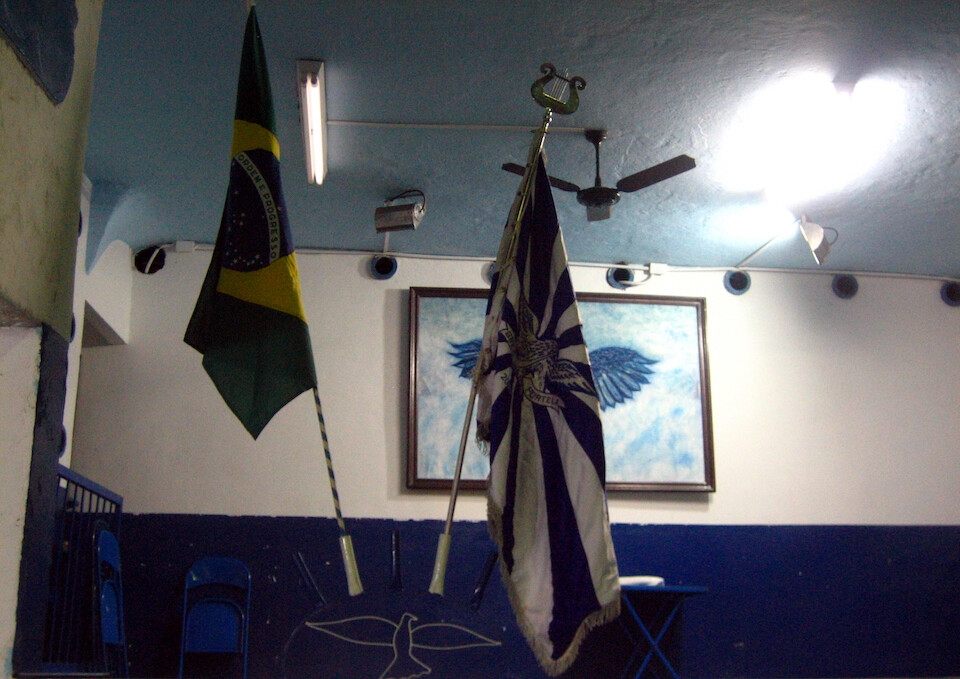
The blue and white flag of the Portela Samba school, one of the oldest samba schools in Rio, being founded in 1923 and winning the first ever samba competition in 1935. Since then, it's gone on to win the most number of samba championships (41) in Rio. If you're not familiar with it, during the Carnival celebration in Rio around February/March every year, there is a competition during the main float parade between the various samba clubs of the city. Each club prepares the whole year for the carnival and it's been a good way to bring a community together. Winning the competition gives you bragging rights till the next year.
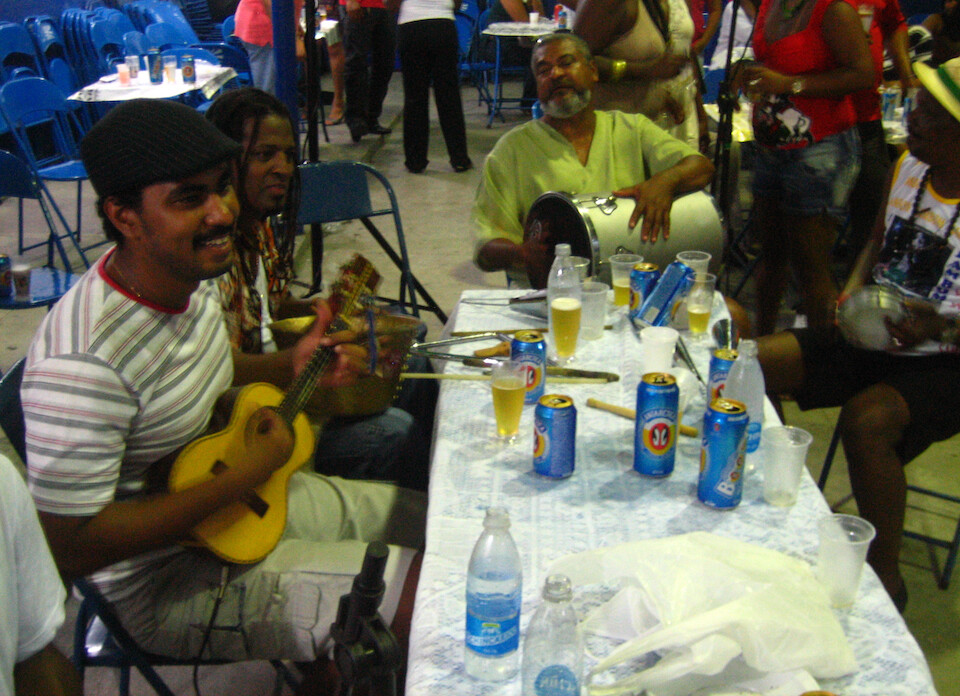
This was a casual party in the off-season to bring everyone together and what do you think happens when a samba school gets together for a party? Well, they samba! Musicians sat around this table, with beer flowing freely and strumming out the energetic beats of samba.
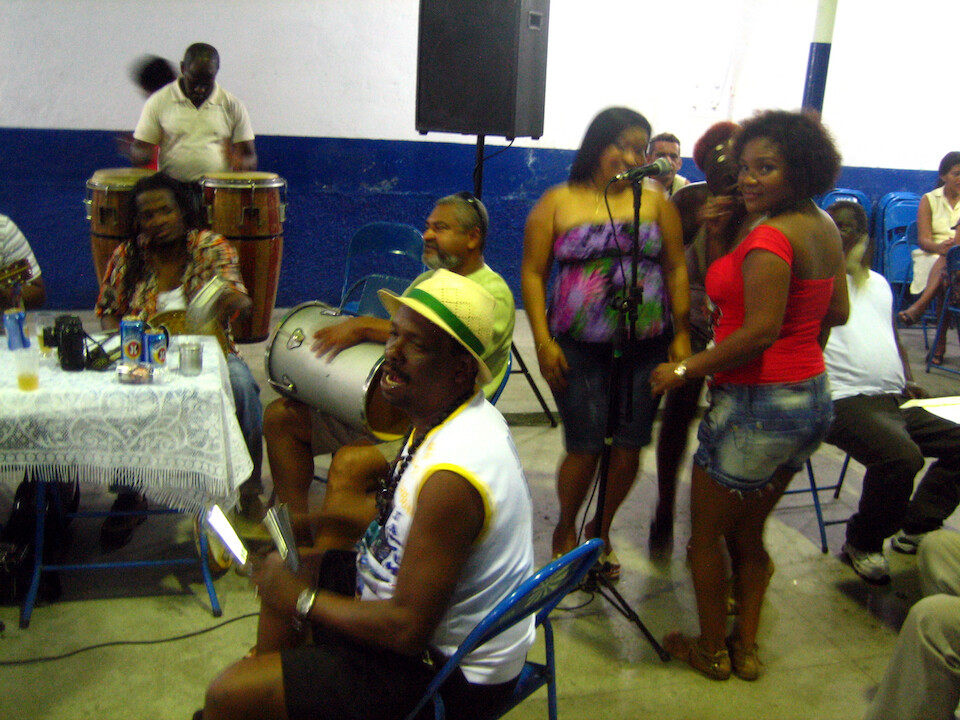
Drums are essential during the samba parade as they keep the beat flowing for the dancers. Each school has around 300 drummers.
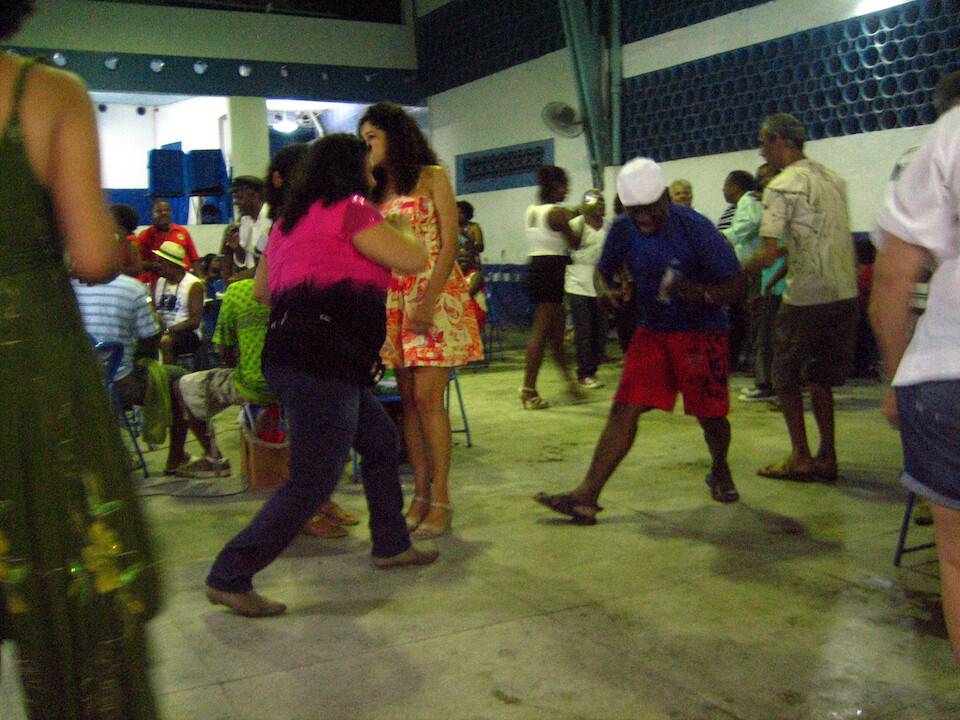
Sonia performing some capoeira, which is a Brazilian movement involving martial arts and dancing. She's in the middle of a 'ginga' with her partner, which is the fundamental movement of rocking back and forth with big movements by the feet.
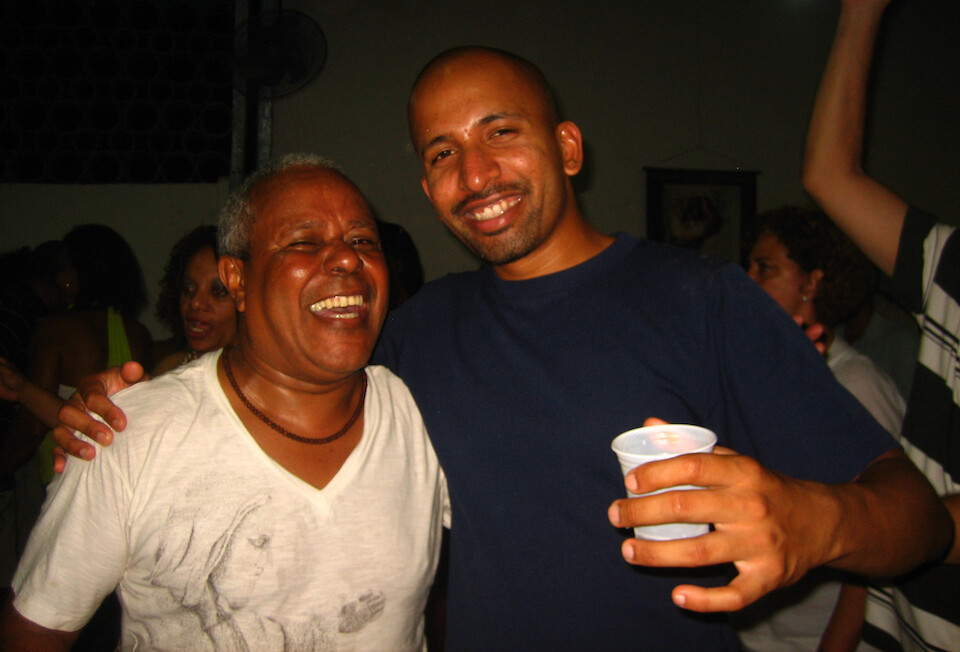
This lively guy grabbed me and wanted to dance and loved the bald head. It's all good in the samba school.

And what would a Brazilian party be without the churrasco (bbq). Freshly grilled meats were flowing throughout the evening.
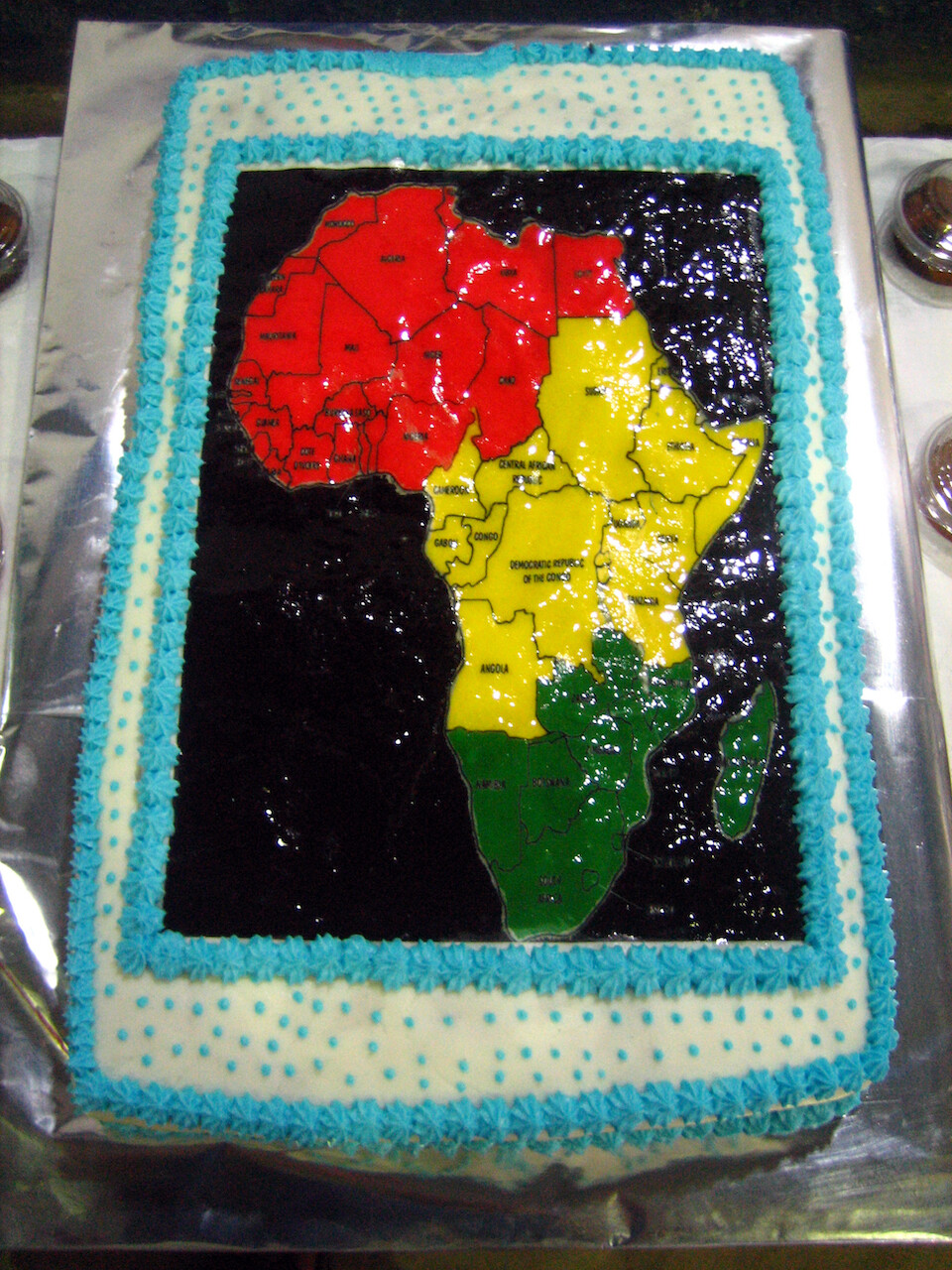
Showing the strong connection between Brazilian and African culture, the cake was decorated in the colors of African Unity (red for the blood spilled in defense of the land, yellow for the gold/riches on the continent and green for the lush vegetation). These colors were adopted from the Ethiopian flag by other countries after gaining independence (as Ethiopia is the only country in Africa that was never colonized by Europe) and by the Rastafari movement, as well. Oh, and the cake tasted good.
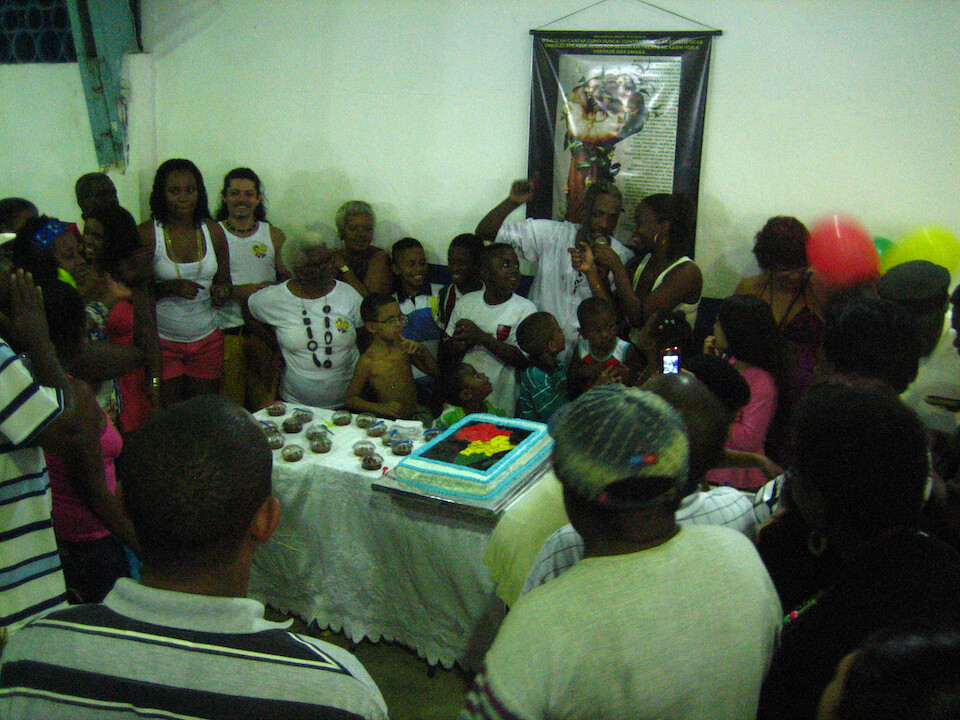
The birthday man giving a speech before the cake cutting with lots of references to liberty and justice for Africa.
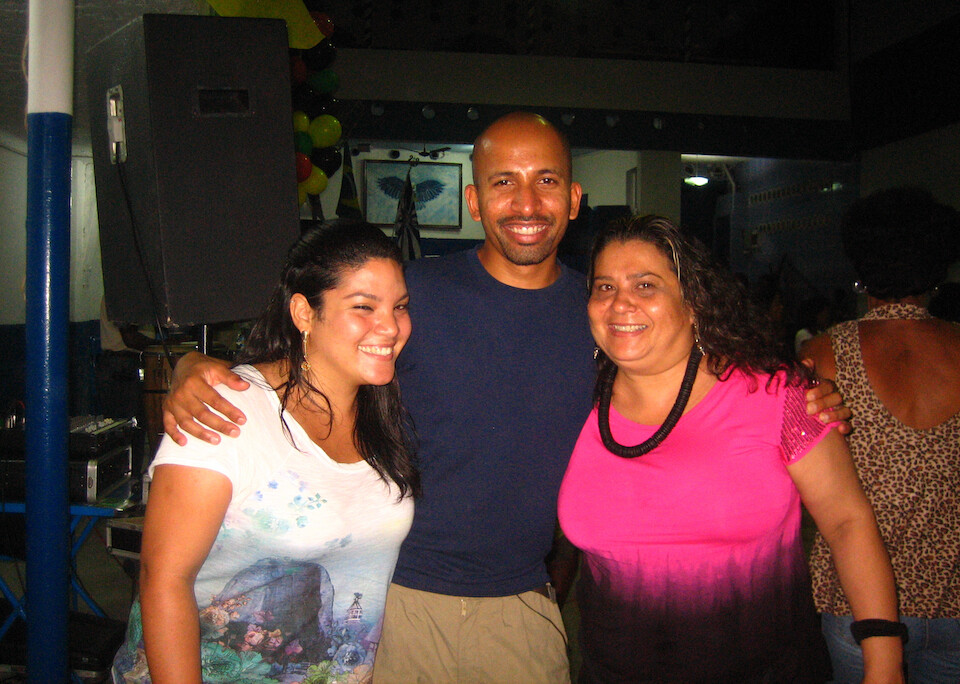
Spending a nice evening at a samba school with Larissa and Sonia.
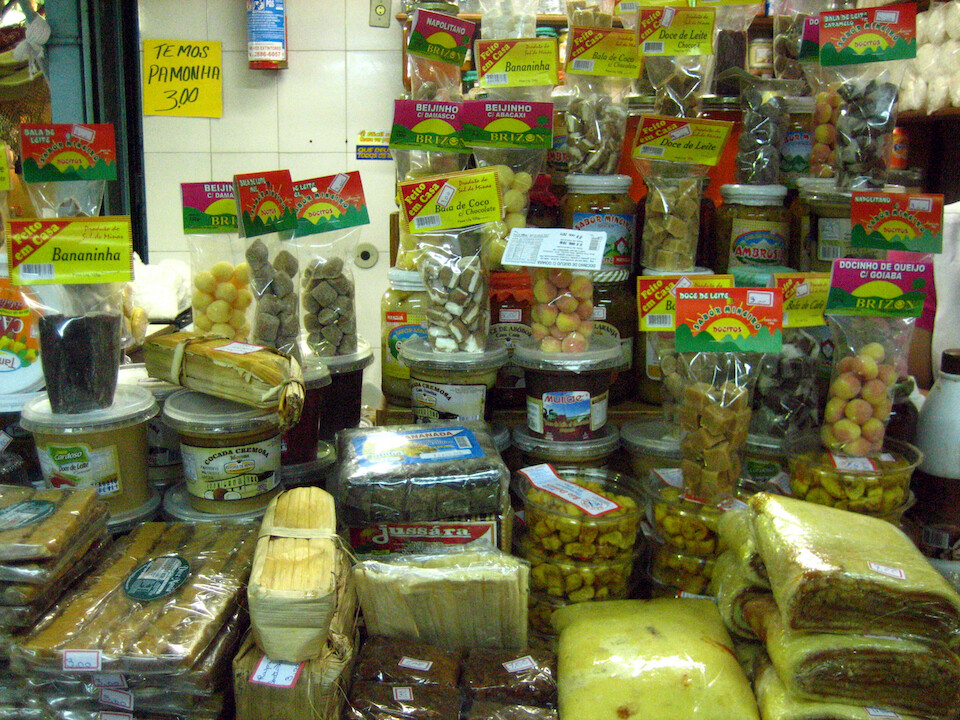
On the way home, we stopped at a fair selling various goods. Here's a selection of sweets from the northeast.
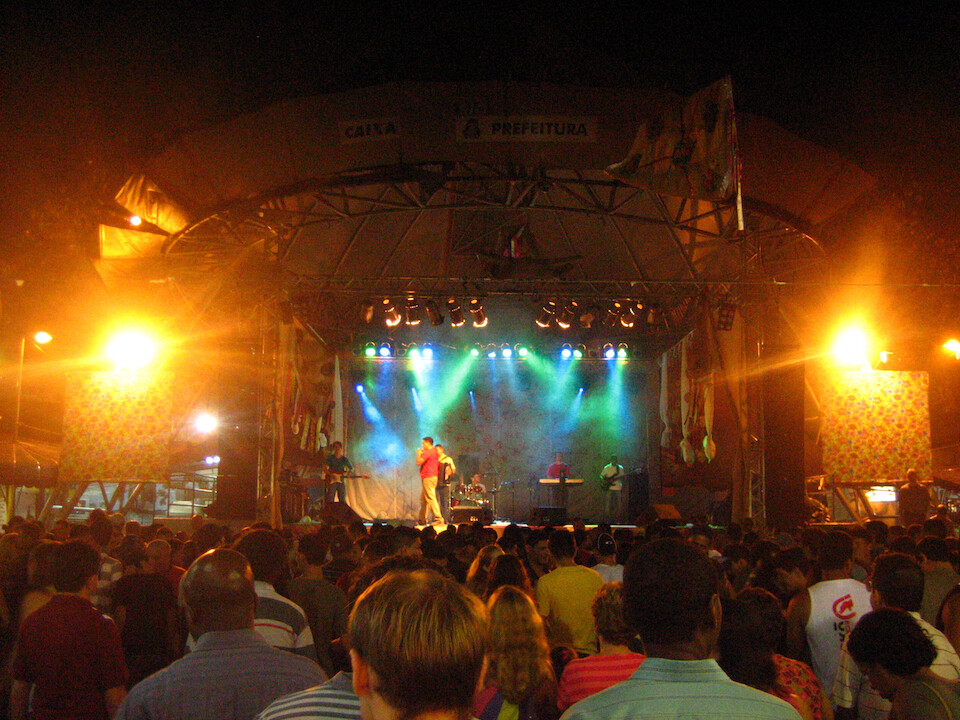
And being from the northeast, there were multiple stages of forró bands.
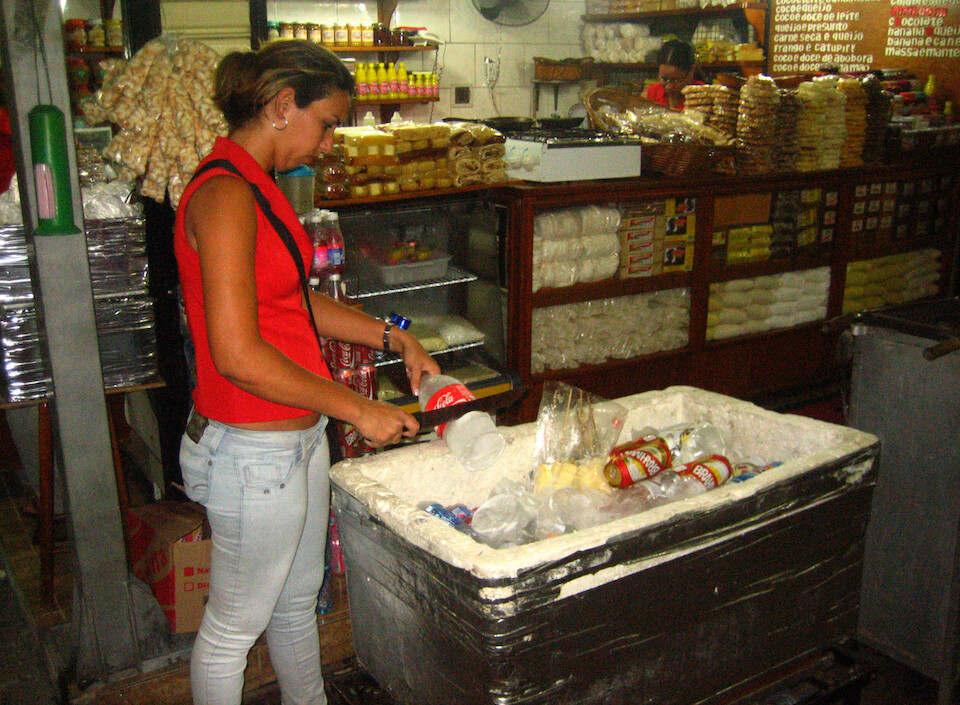
I had to capture how matter-of-factly this lady was chopping up frozen bottles of water with a machete to keep the beers cold.
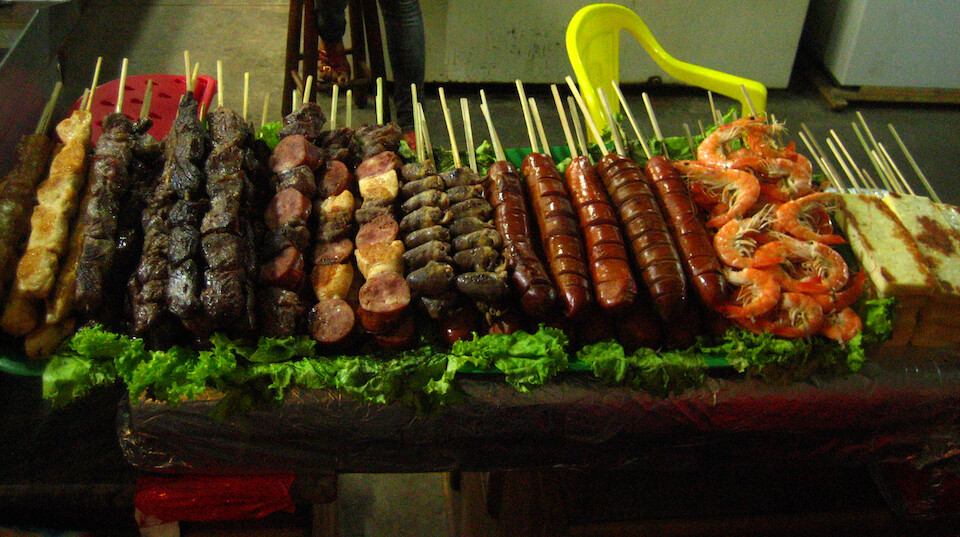
All sorts of grilled meats.

Sonia was very nice and let me use her 50cc Aprilia scooter to buzz around the city so that I wouldn't need to risk sanDRina. I felt safe all around Rio, but a big adventure bike like sanDRina sure does attract a lot of attention. I got a flat tire and am getting the tubeless tire fixed at a borracharia (tire repair shop).
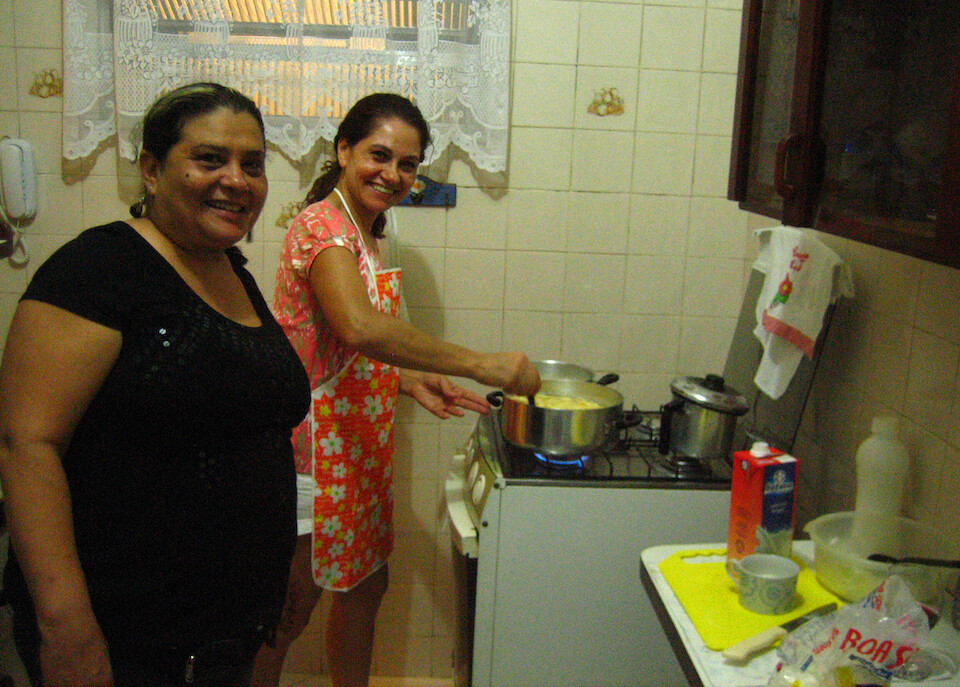
One of the evenings, Sonia's friend here, Elena invited us over for dinner. I couldn't help but cut a few onions.
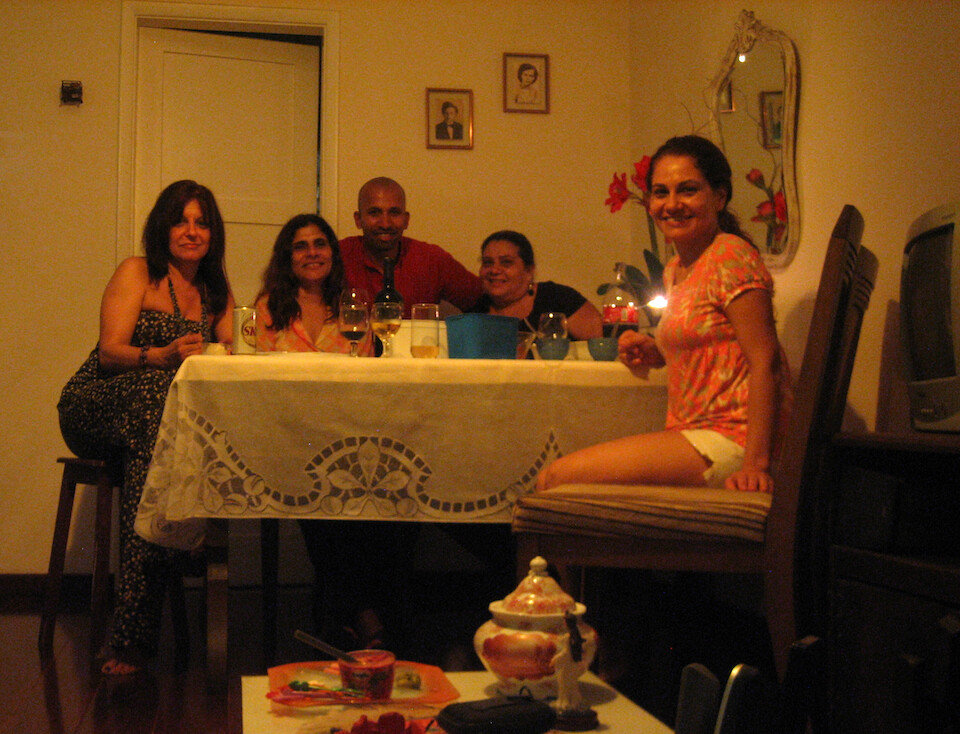
Dinner with Christina, Marsa, Sonia and Elena. We had interesting conversations with me answering lots of questions about India and them telling me about how it's not popular to be married in Rio these days, especially for these 50-somethings. They were all either single, never-married or happily divorced strong women. You can imagine the shock when I told them about arranged marriages in India and the fact that we have fewer divorces than in the west due to these type of marriages being more out of duty than love.
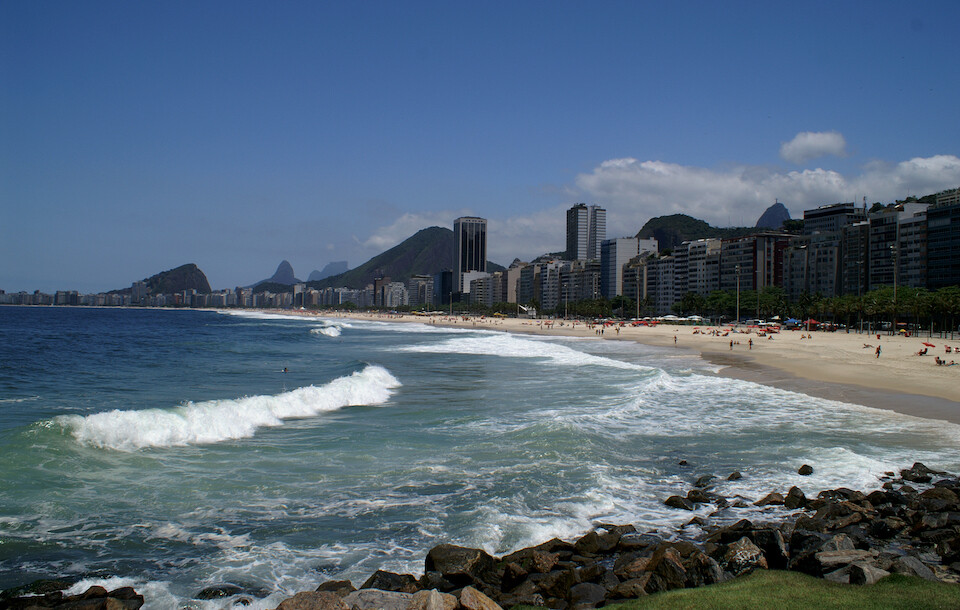
Copacabana and Leme Beach, famous the world over for its luxuriant sun, sand and beach-goers. It stretches for 4 kms, being defined by forts at either end.
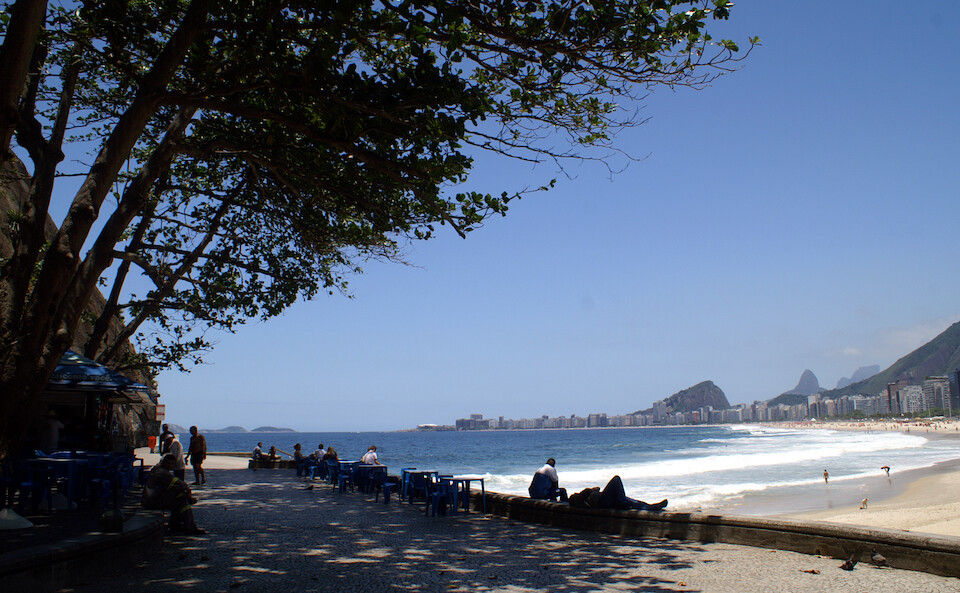
A viewpoint of Copacabana and Leme Beach from the Morro do Leme (a rocky outcrop) on which sits the Fort Duque de Caxias.
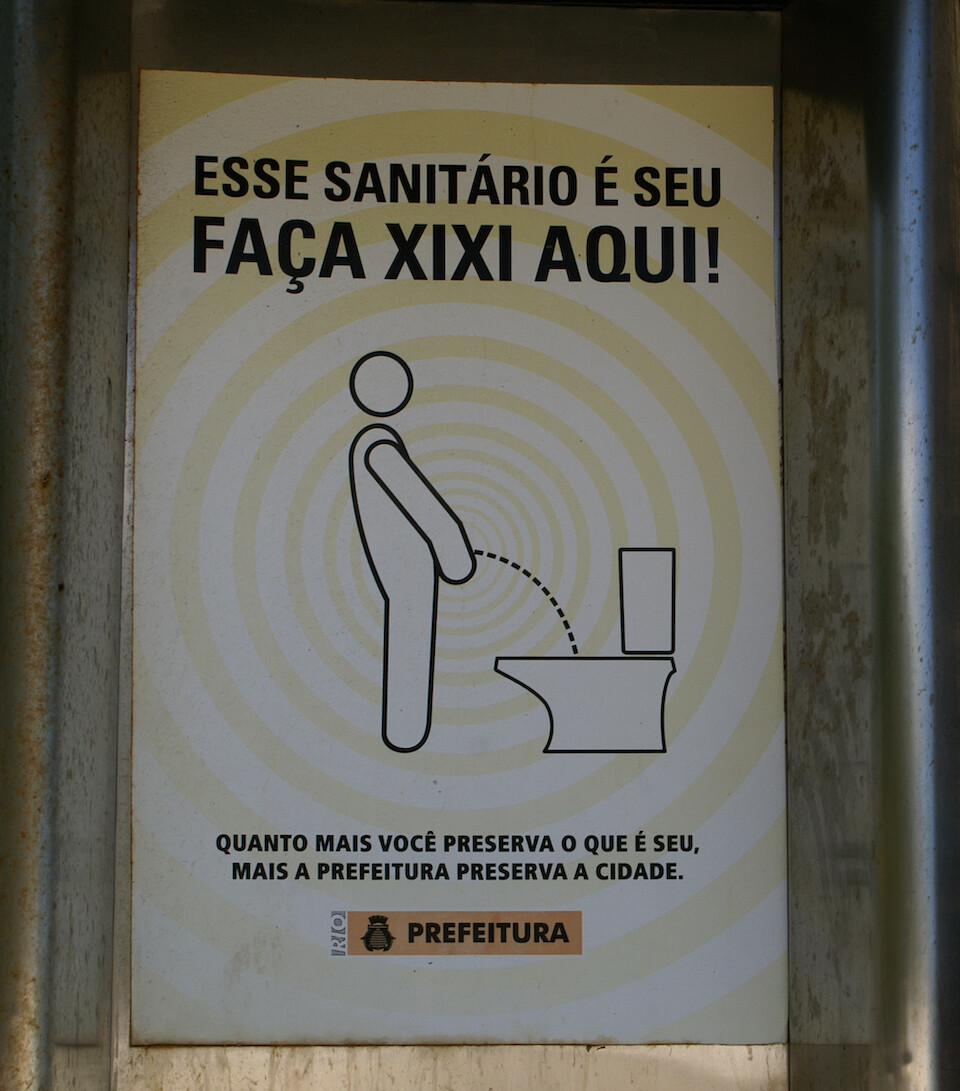
Public bathroom encouraging you to go "xixi" here, rather than outside.

Exquisite sand sculpture along Copacabana Beach of bikini-clad women checking out the action on the beach.
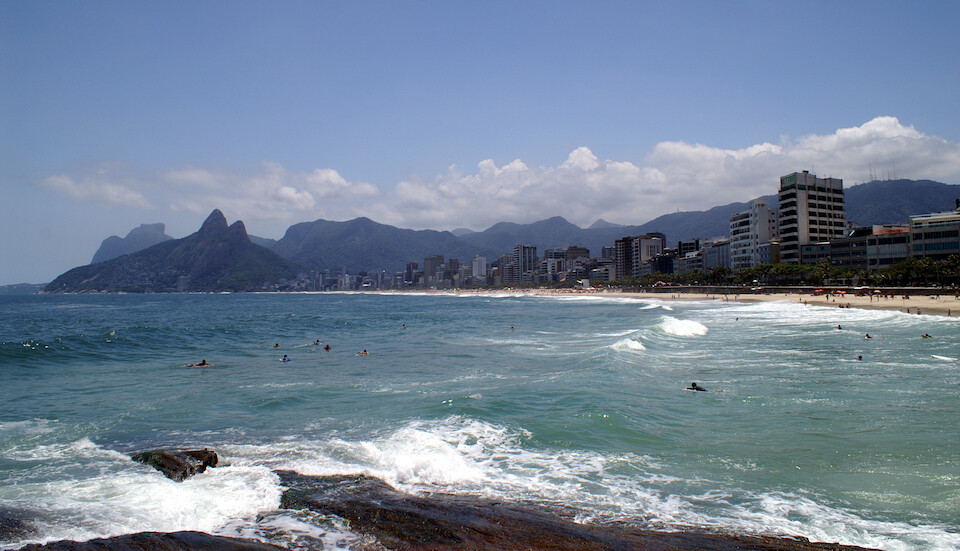
Heading a bit further south and after rounding the Copacabana Fort and Pedra do Arpoador, you come across the next big beach of Rio, Ipanema.
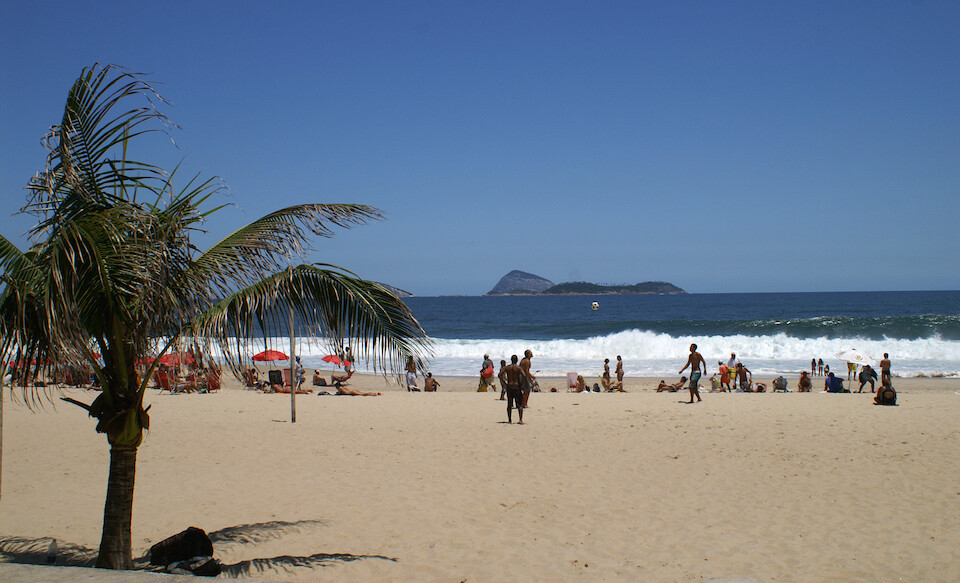
Ipanema Beach is considered to be more chic and trend-setting than Copacabana, but you can imagine that there's a healthy rivalry going on between the faithfuls of either beach. Ipanama is credited with introducing to the world the dental-floss bikini and other beach fashion.
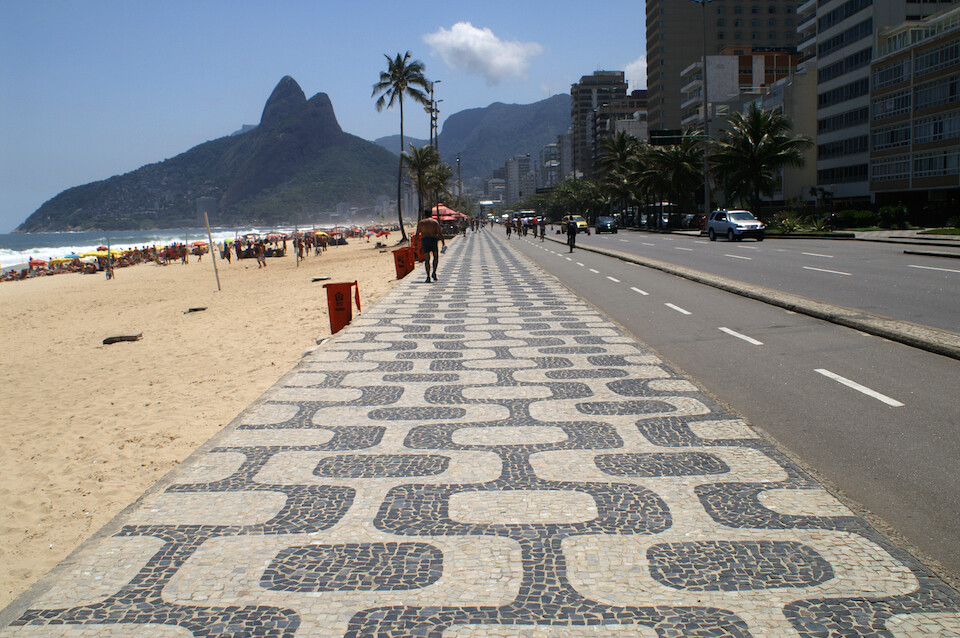
The unique pavement pattern at Ipanema. Every beach has its own design.
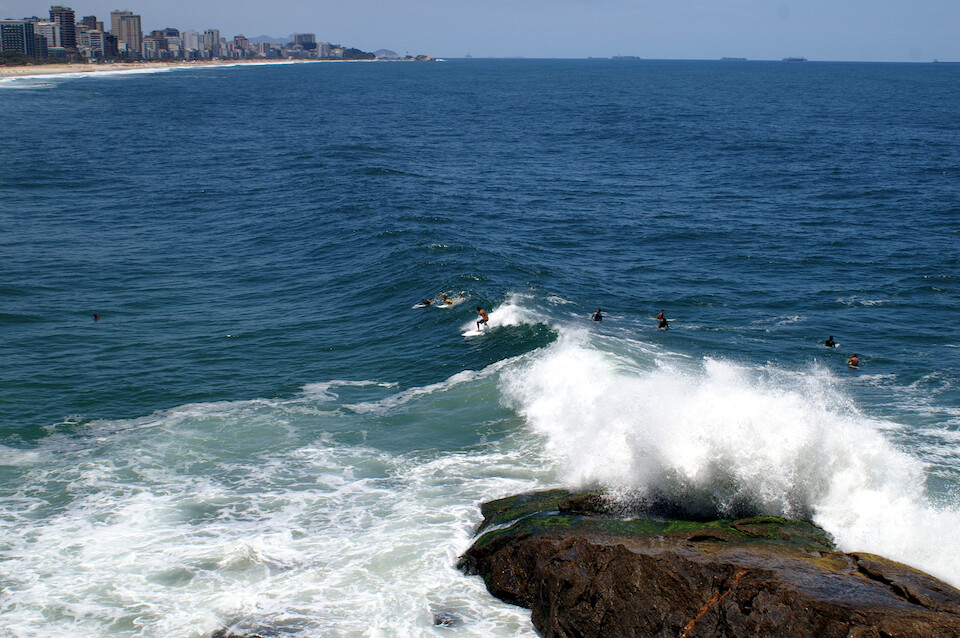
Surfers catching some waves a bit further south at Leblon Beach. Ipanema runs along the top.
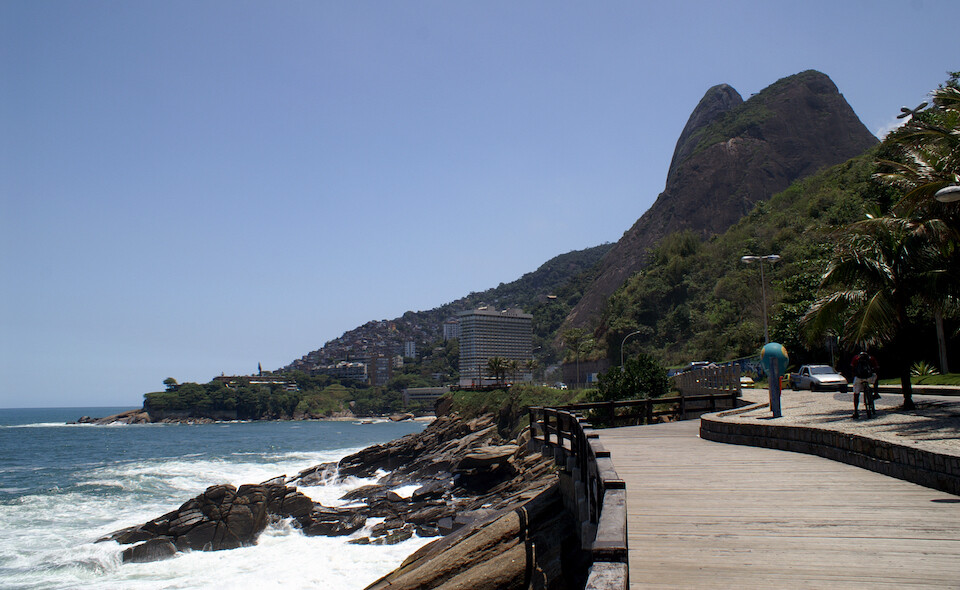
A view of Morro dos Dois Irmãos (two brothers, because of the split peak) from Mirante do Leblon (viewpoint).
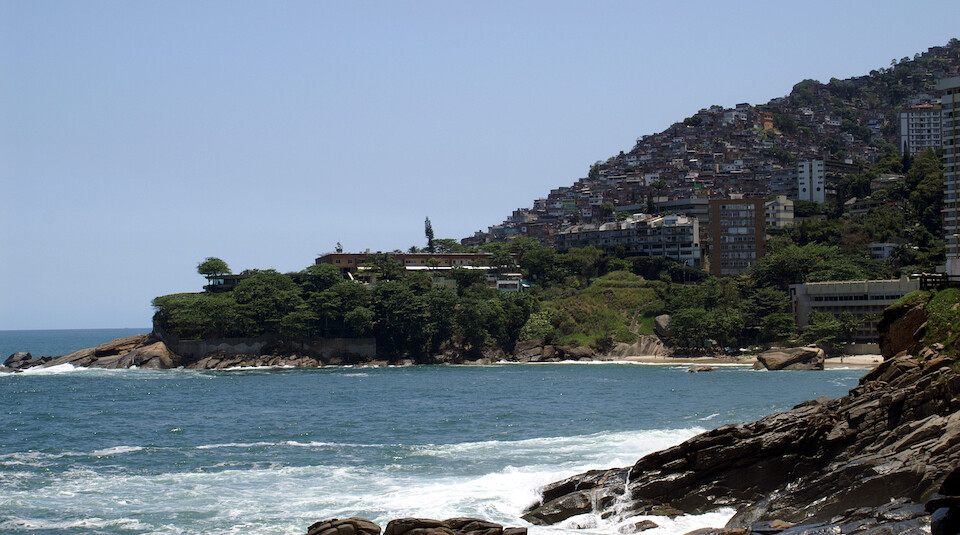
A closeup of Favela do Vidigal at the base of the morro. These were referred to as slums in years past, but now the more correct term is "communities" and yes, it's true, a lot of violence is centered around them like the news reports, but it's not all gloom. The unique thing about the favelas of Rio is that the mountainous geology forces them to be right next to rich neighborhoods, compared to say those of São Paulo, where the favelas can be quite separate from the rich areas. Sonia told me that because of this closeness of distinct social classes, there's a unique relationship between the rich and poor where they both see each other and respect that things are different. She said if gangs from another favela come to rob a rich house close to their favela, they'll protect the rich house, for nothing in return.
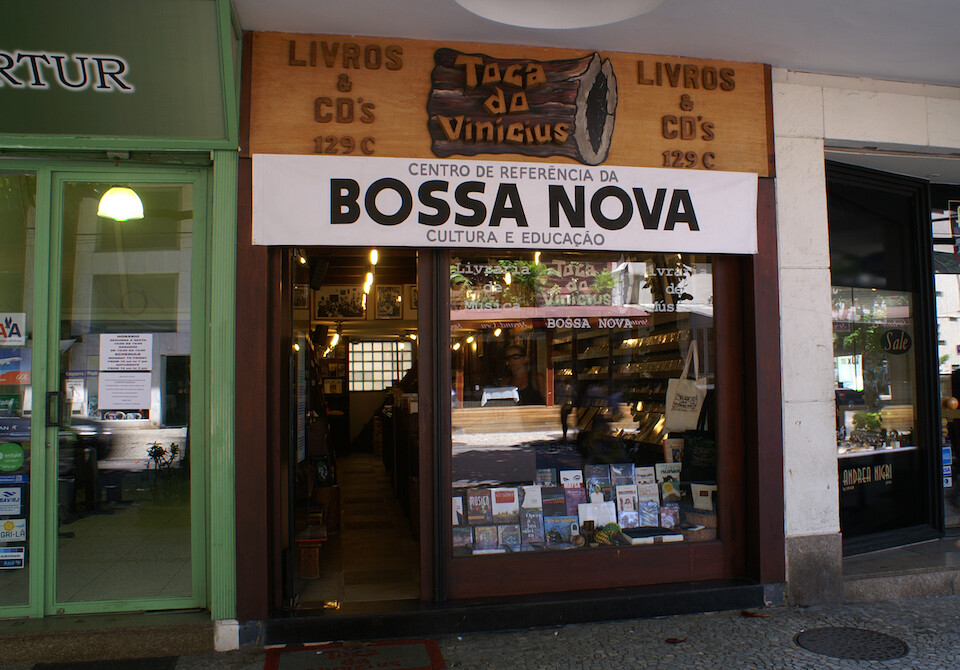
More than the beaches, I've wanted to come to Ipanema for so many years to experience this: Bossa Nova where it was born. Besides electronic trance, this is the type of music I listen to most often.
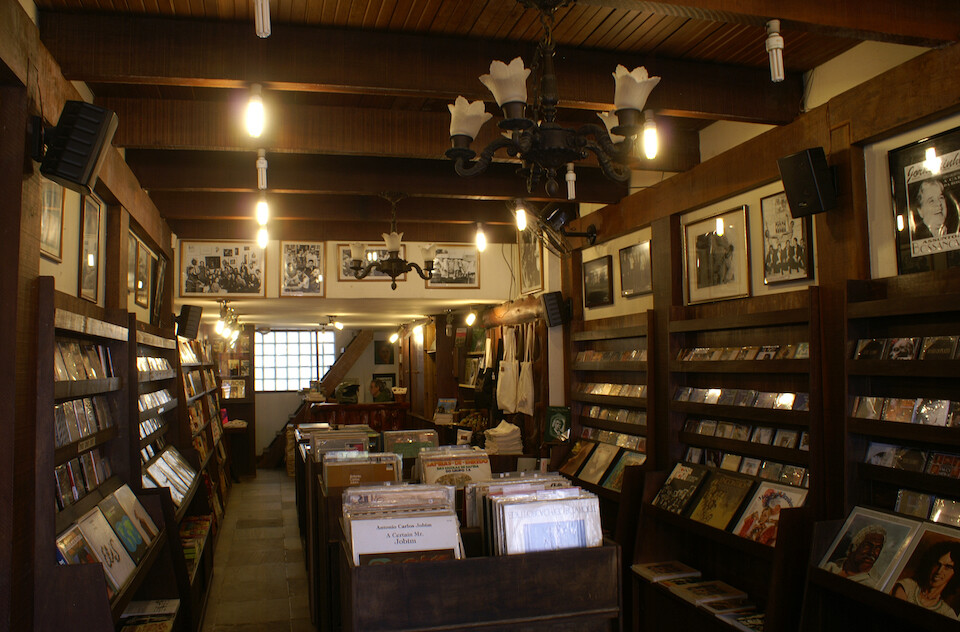
This music store, Toca do Vinícius, is considered a reference for the genre and along with finding classic records, there're historical pictures and artifacts.
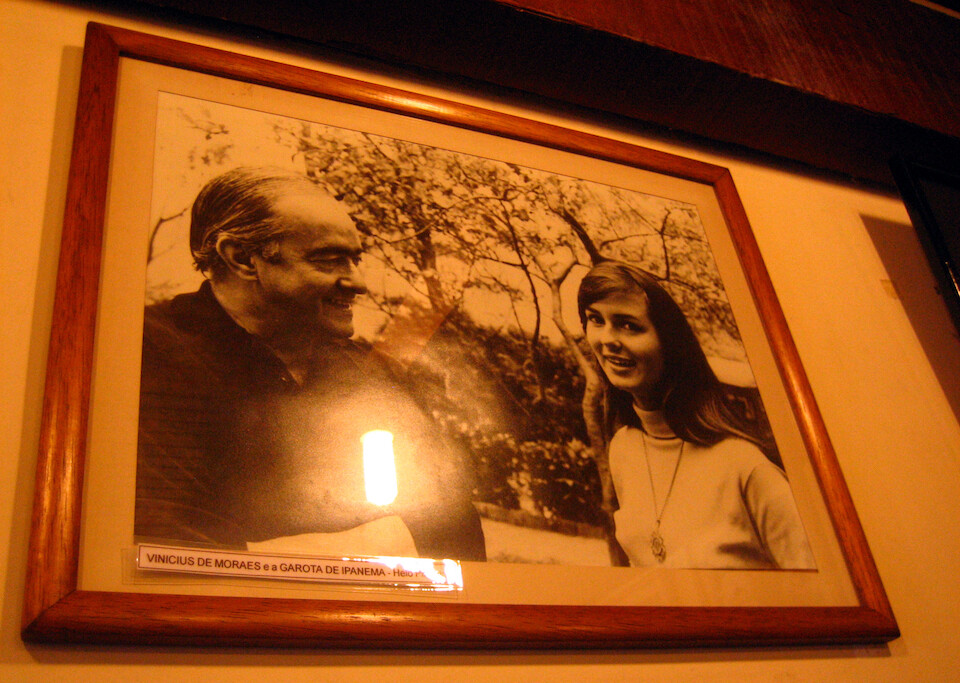
The genre became famous worldwide with Antônio Carlos Jobim's classic "The Girl from Ipanema." Here, Vinícius de Moraes who put the Portuguese lyrics to the track is with the actual girl from Ipanema, Helô Pinheiro, who inspired the writers as she passed in front of them, going back and forth to the beach in Ipanema in the 1960s.
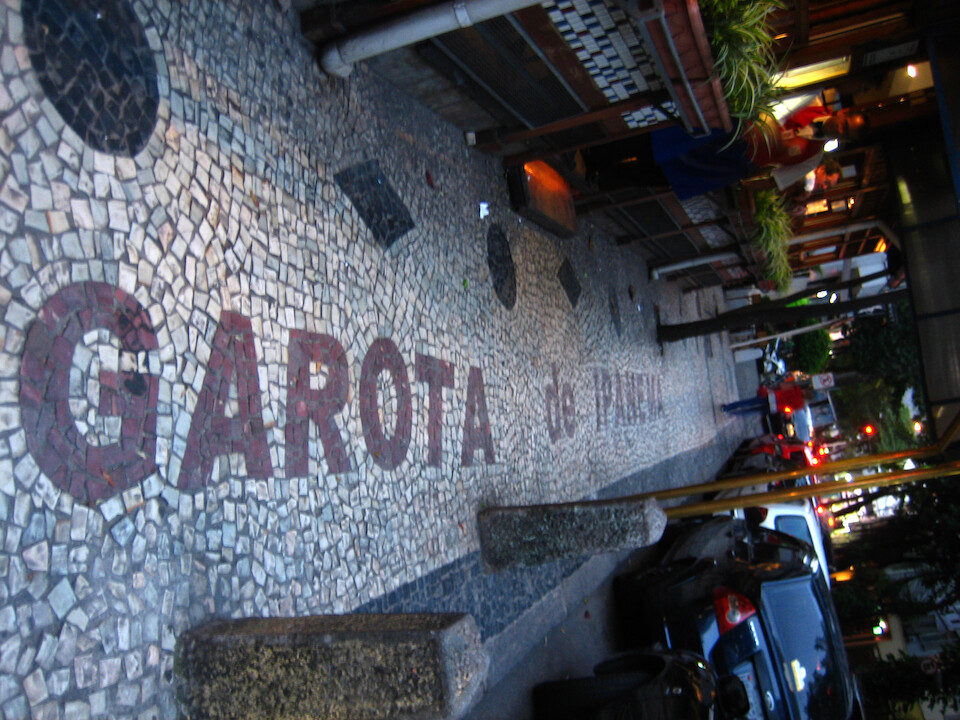
Just down the block is the holy shrine of Bossa Nova, the Garota de Ipanema bar (previously called Bar Veloso), where Jobim and Moraes composed their numerous classics and caught sight of the garota (girl) de Ipanema.
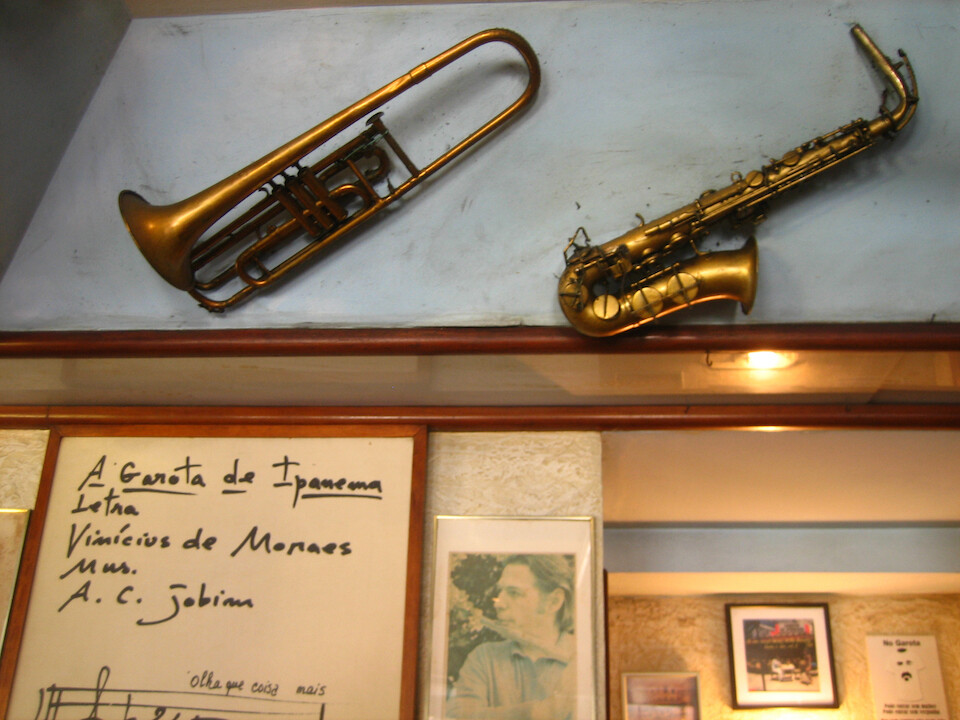
Inside, along with cold beer are lots of instruments and artifacts of the Bossa Nova culture. The genre emerged as a mix from samba and jazz with its own unique rhythm. Besides the sweet sounds to my ears, the connection is strong as I played the saxophone (tenor and alto) all through school and enjoyed the jam sessions with my friends in our jazz band. I need to get back in touch when I settle down next.
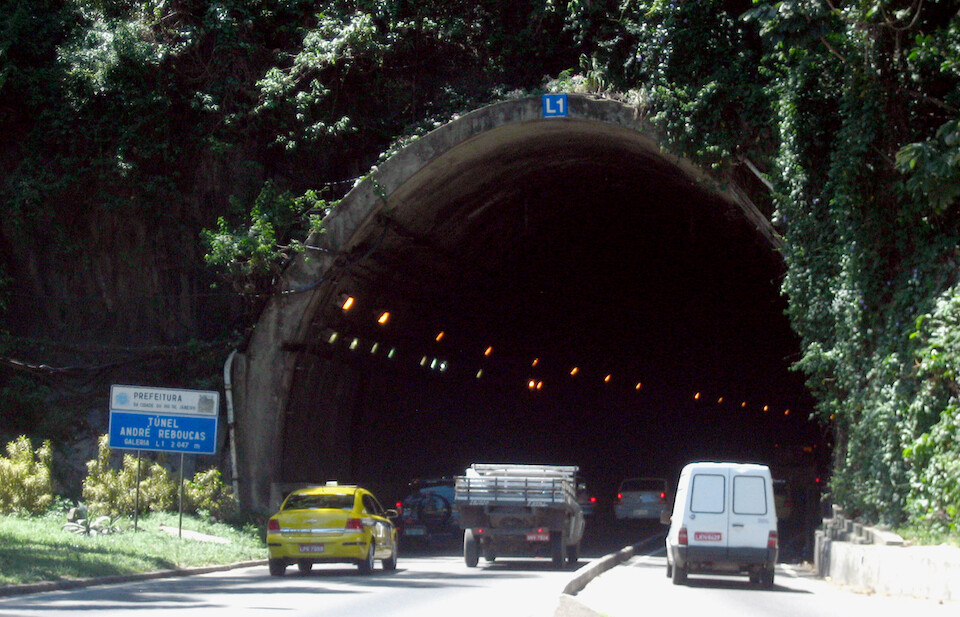
Entering the André Rebouças Tunnel, which connects the beach neighborhoods of the south with the districts in the north, where Sonia lives. This tunnel, one of numerous around Rio, runs for 2 km under Corcovado.
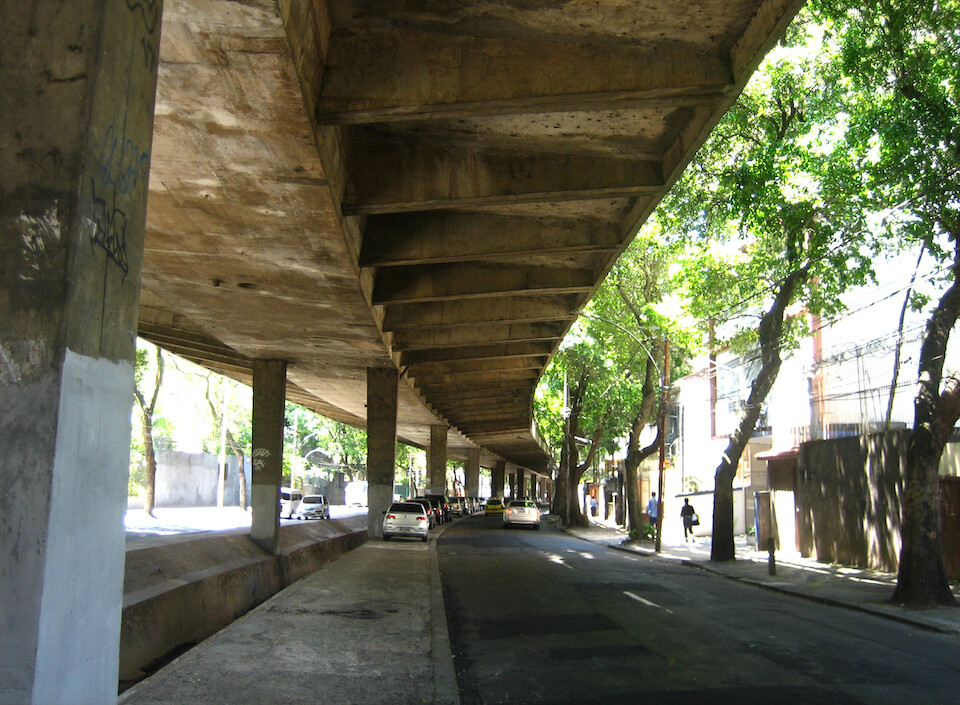
An elevated highway running through Sonia's neighborhood near Maracanã stadium.
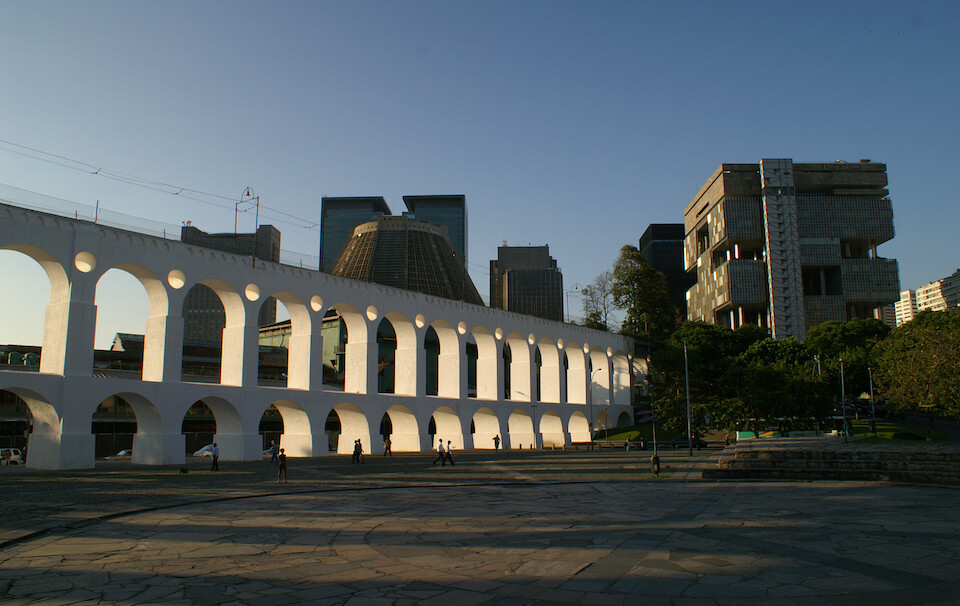
A sunset shot of the Arcos da Lapa or Carioca Aqueduct, built in the 18th century to bring fresh water from afar to the city, which was surrounded by swamps.
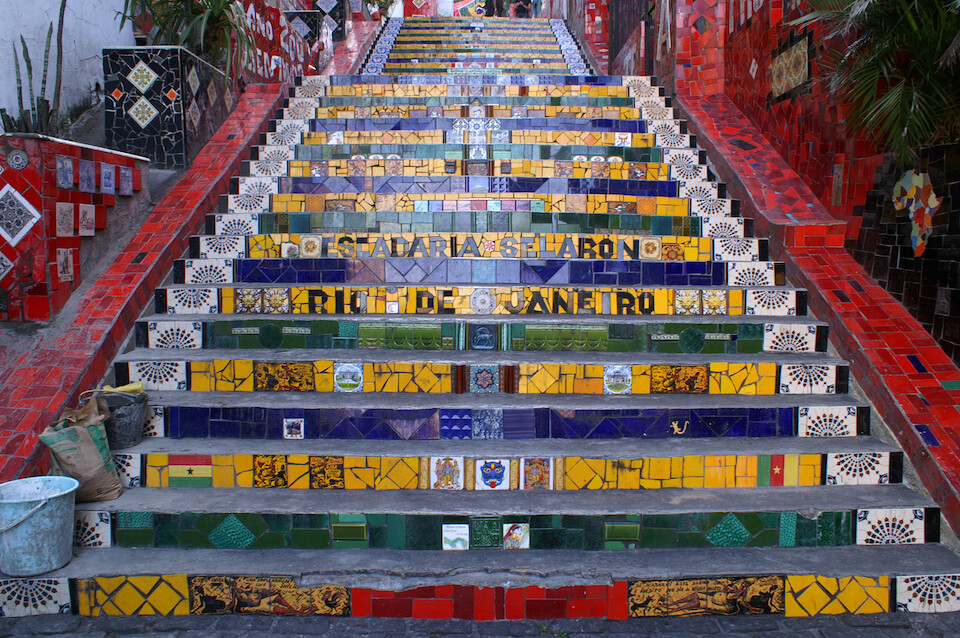
The Escadaria Selaron (the steps of Selaron) straddling the Lapa and Santa Teresa neighborhoods. This beautifully tiled staircase is the labor of love of Chilean sculpture Jorge Selaron, who started on a whim in 1990 to improve the steps outside his house. Tiles have been donated by travelers from around the world as his reputation has grown.
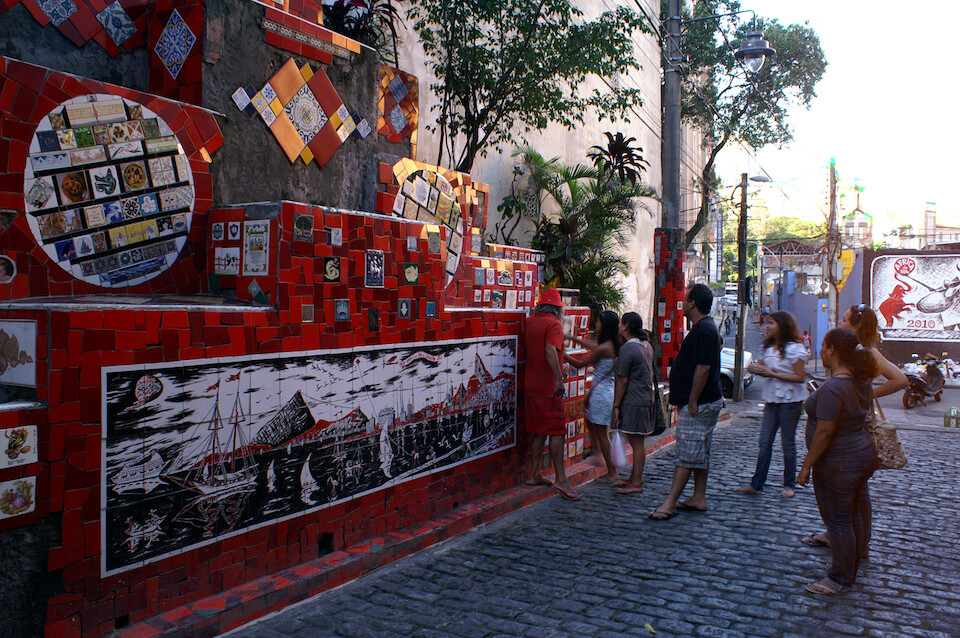
He can be seen everyday working on the stairs in his iconic red clothes and loves to show travelers from other countries where the tiles are from their country.
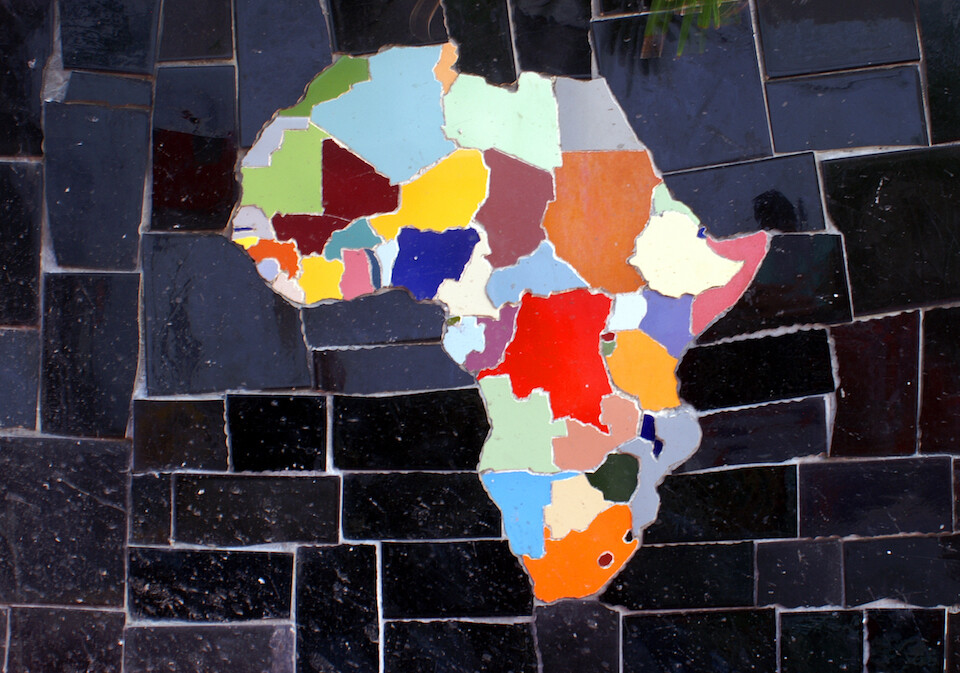
An intricate tile work of Mama Africa.
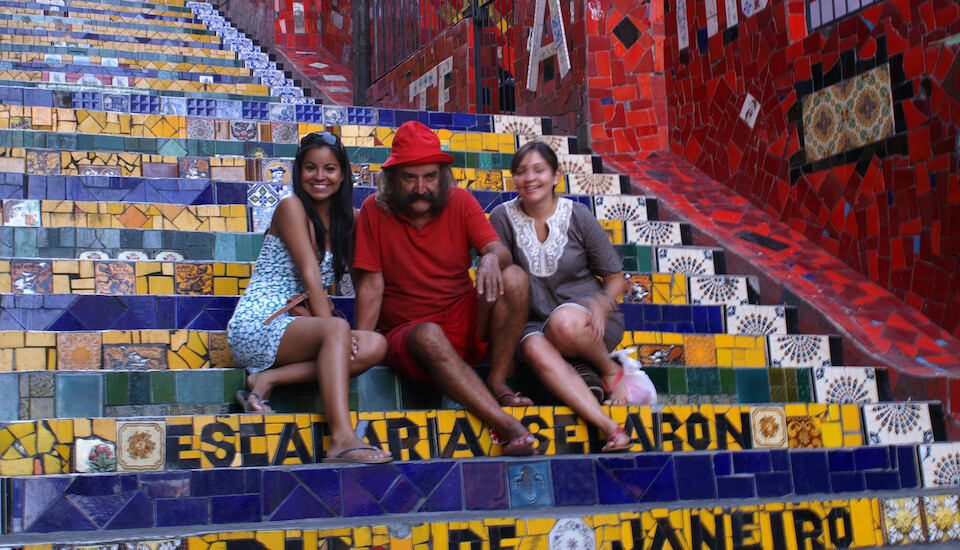
I sat for a photo with Jorge, but I thought this picture of him with some Colombian girls would be more appreciated.
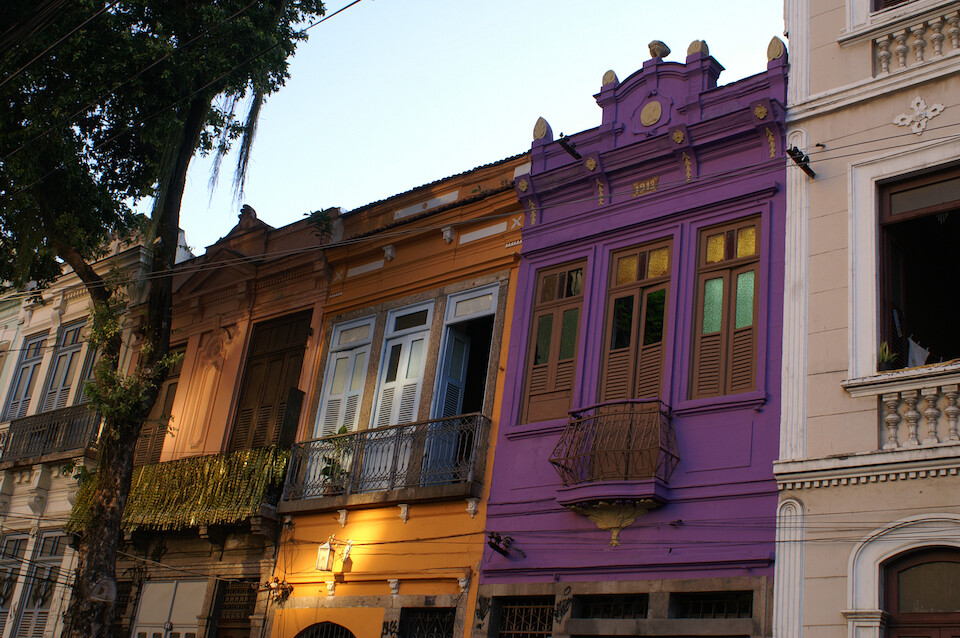
Colorful colonial buildings in Lapa.
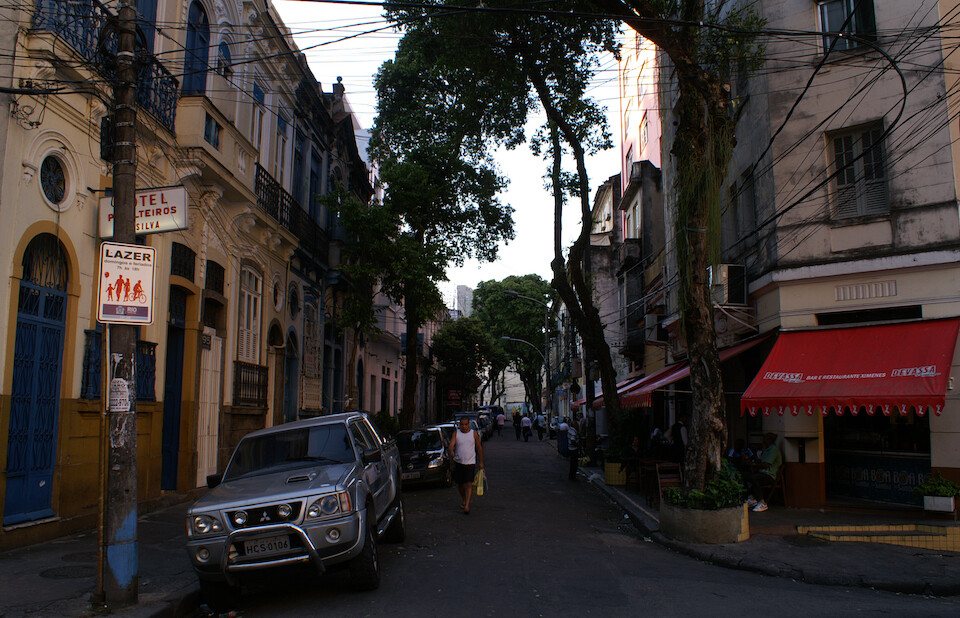
During the day time, when it's not packed with throngs of party-goers, Lapa is a quiet neighborhood to stroll around and have a coffee.
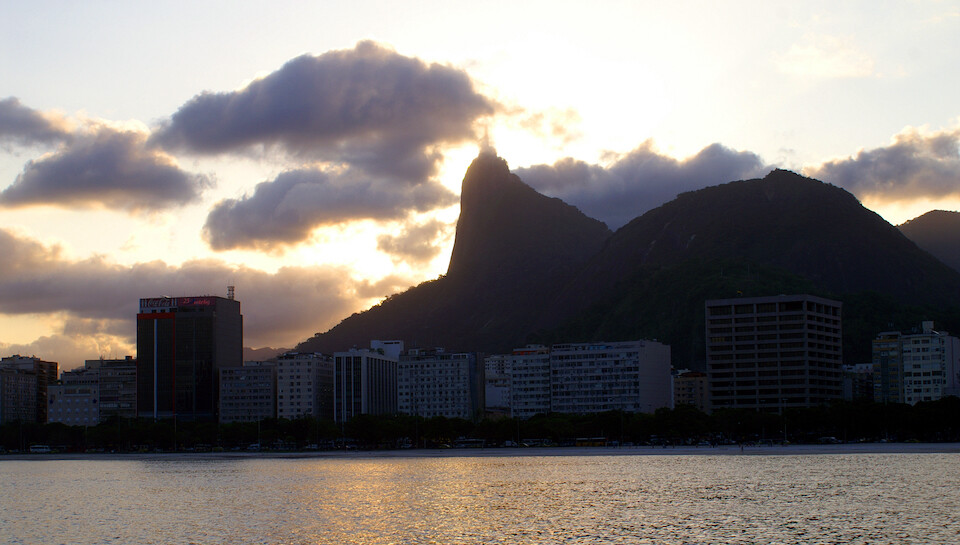
Cristo Redentor, up on Corcovado (meaning hunchback), towering over Rio.
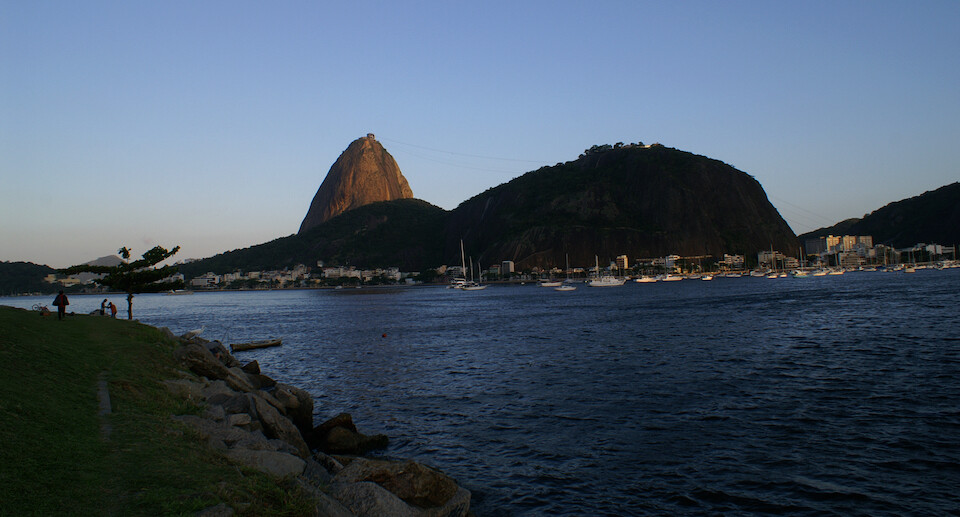
A view of Pão de Açúcar (Sugarloaf Mountain) from Botafago Beach. I hope cariocas realize what a stunning city they have.

A sunset shot of Morro dos Dois Irmãos from Leblon Beach.
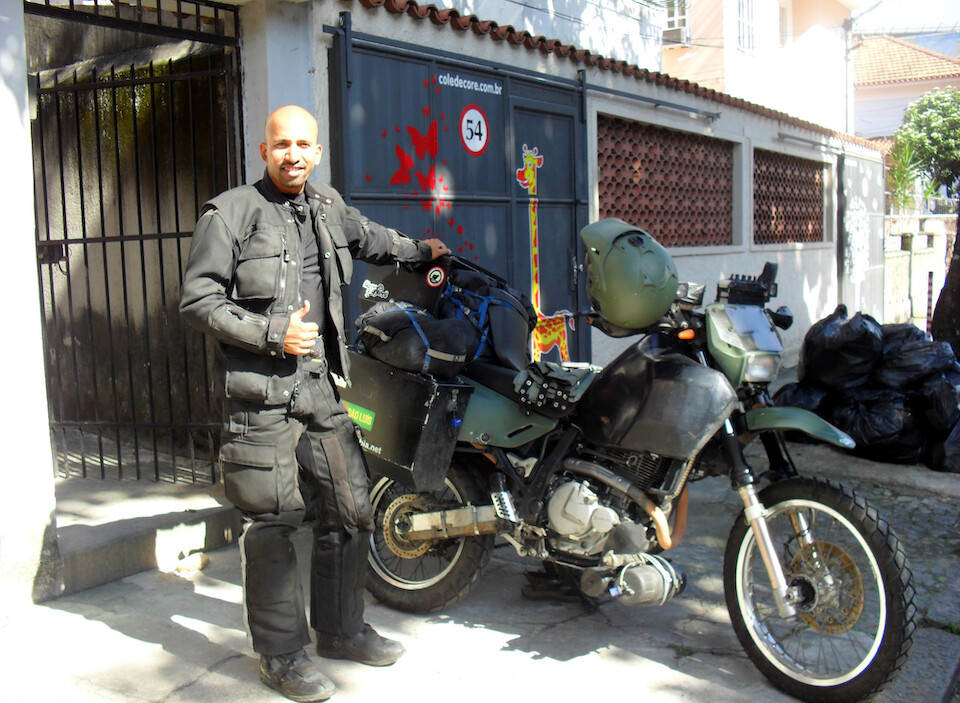
Saying good-bye to Sonia after a nice 11 days in Rio with visas for Argentina and Chile in hand.
It's all true what they say about Rio de Janeiro. The beaches are great, the people are warm and beautiful and the city is set in some stunning landscape. It's well-deserving of the title of Cidade Maravilhosa. I was really impressed with the geologic diversity within city limits of such a massive metropolis: huge granite towers rising from the sea, long tunnels, huge lakes, dense forests and gorgeous beaches. Oh, I need to come back and live here some day...